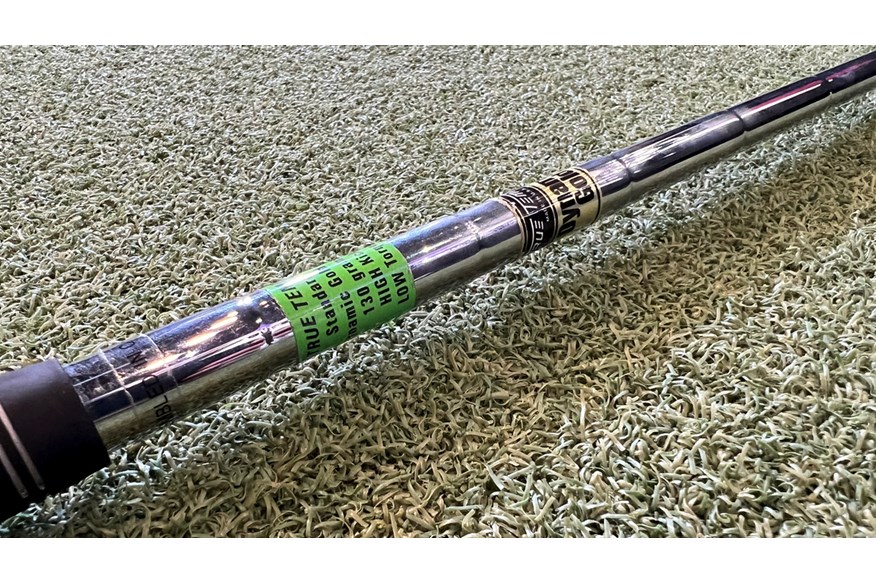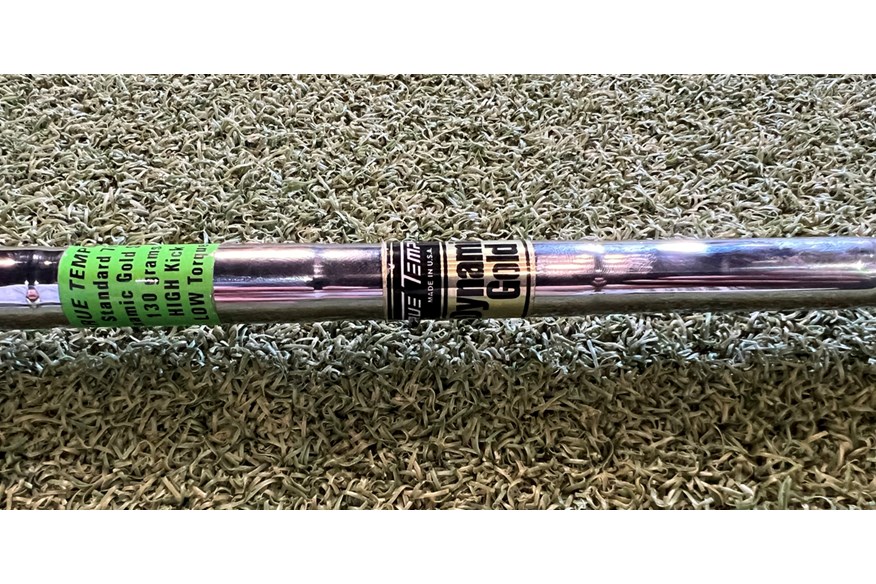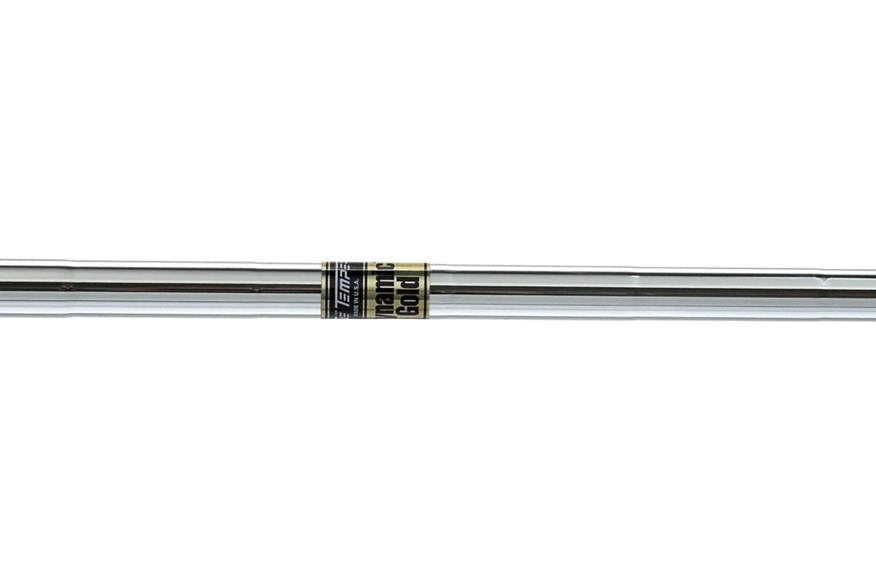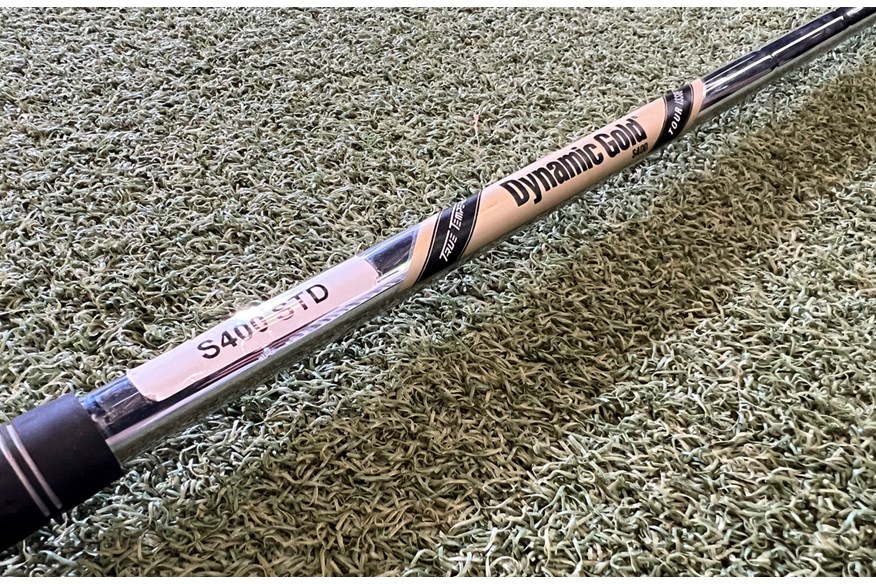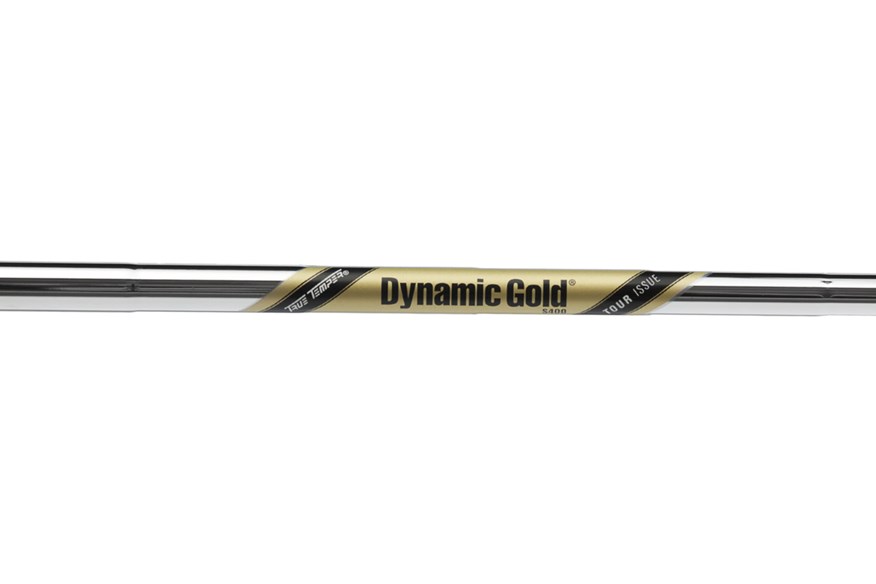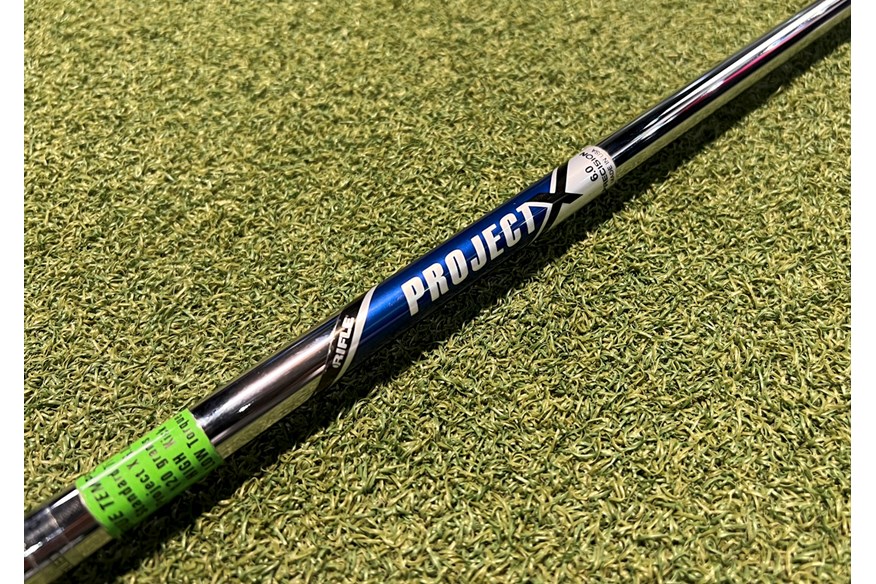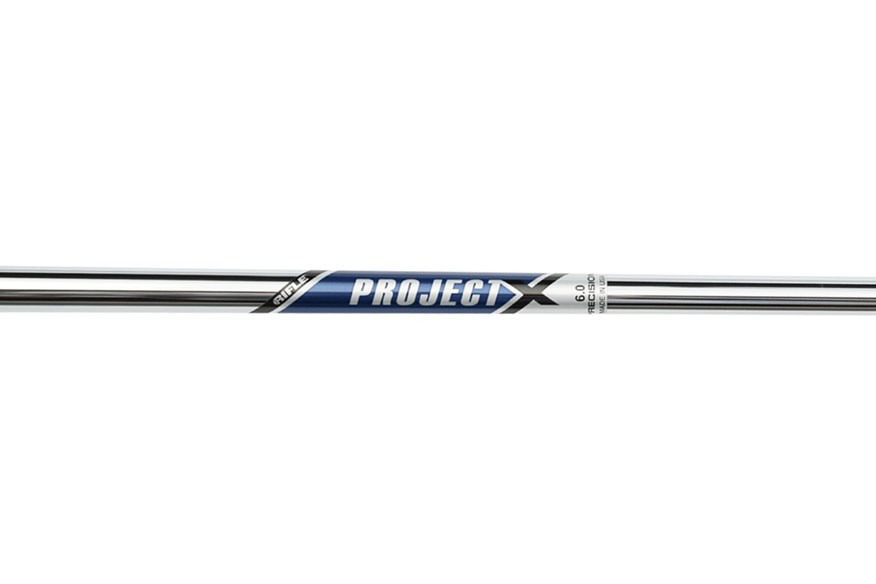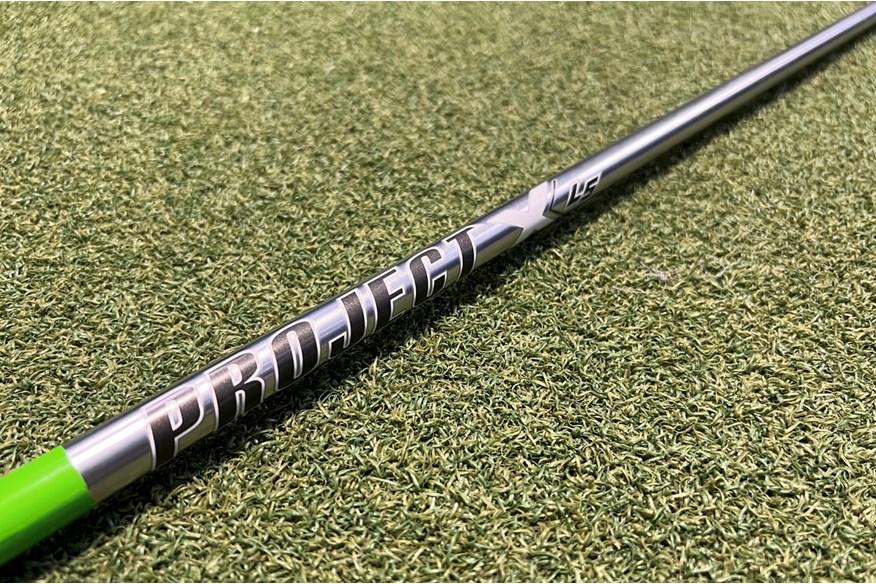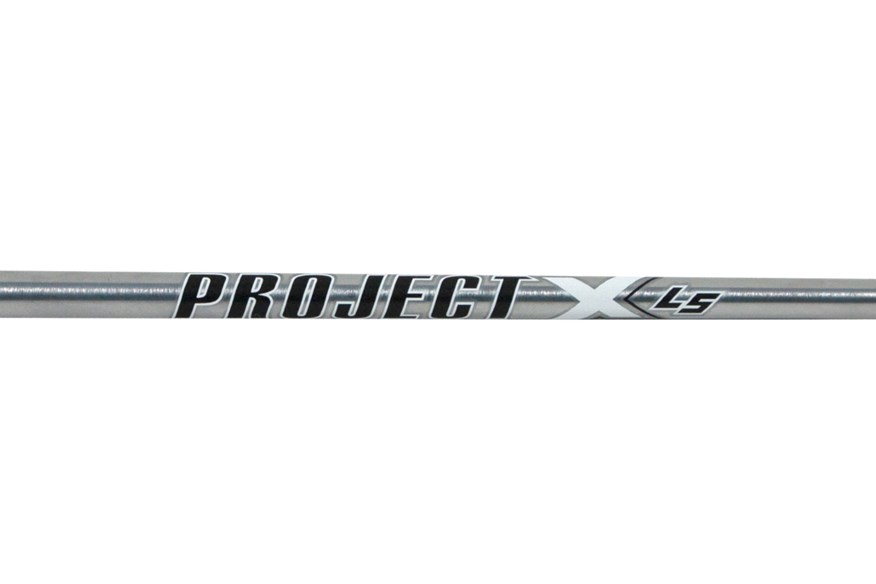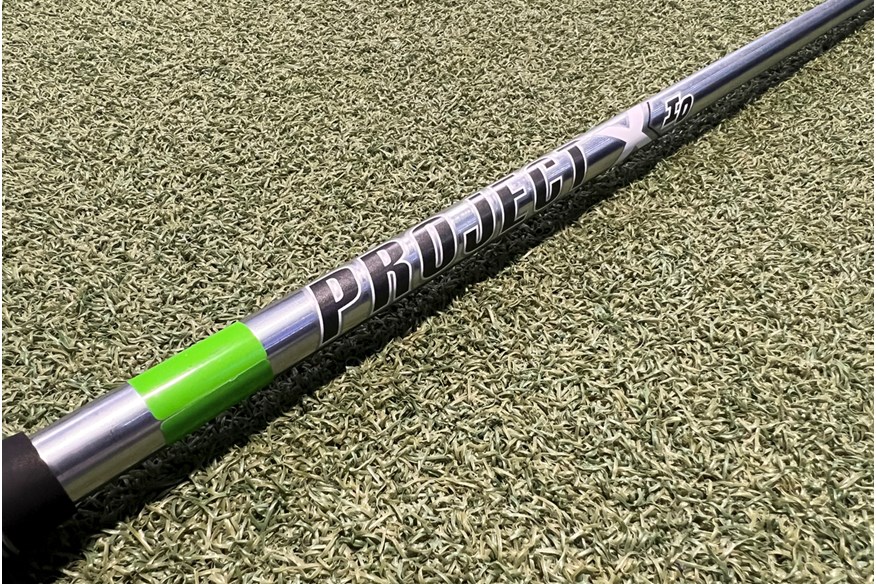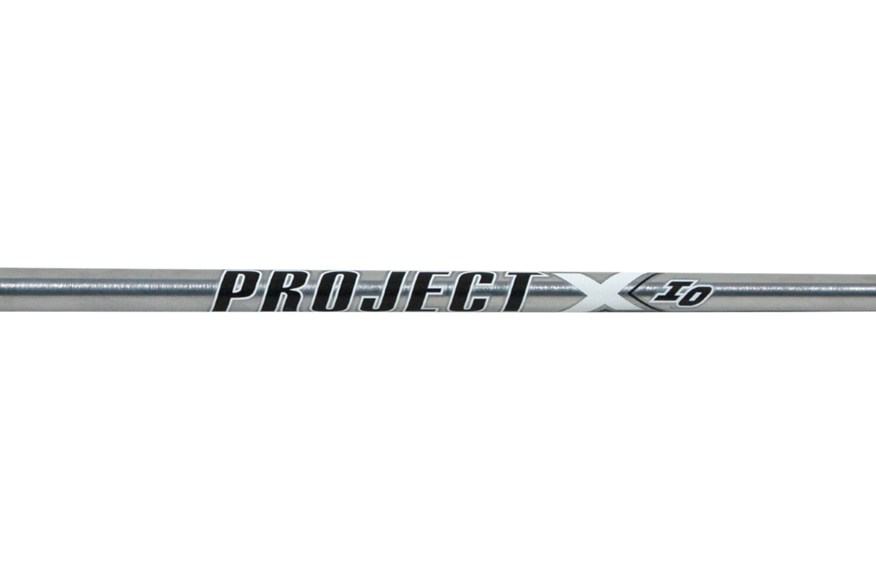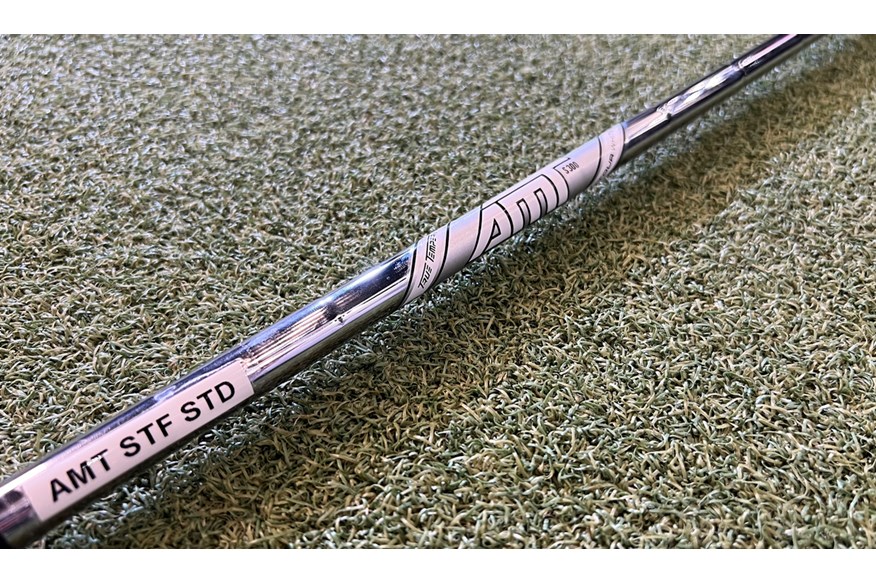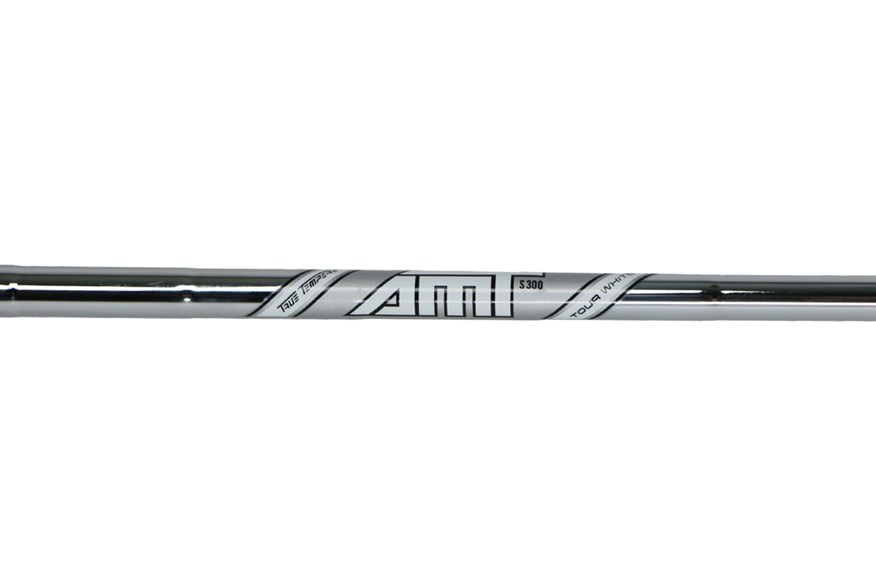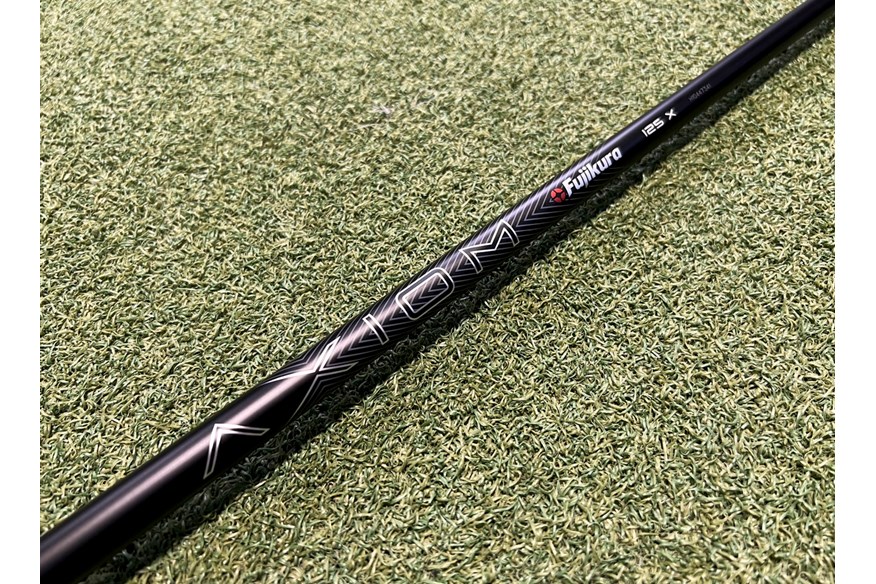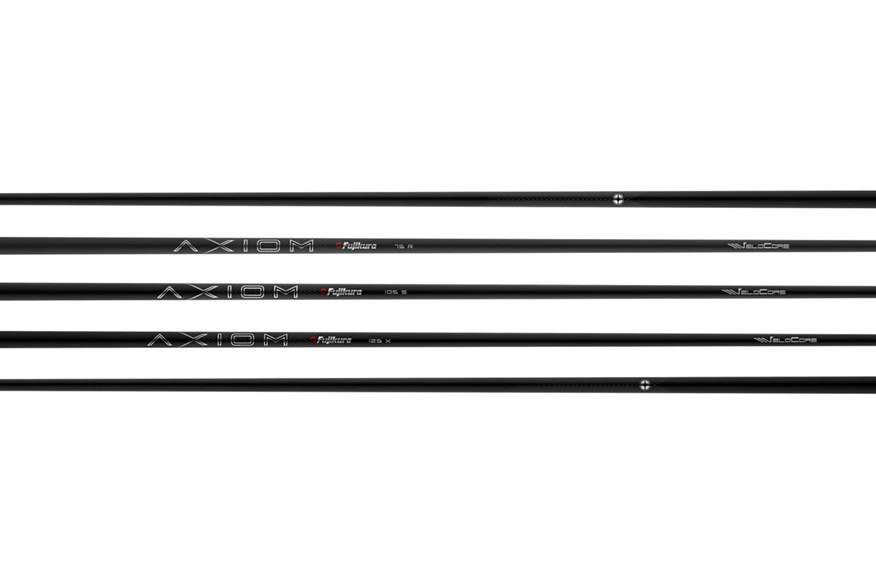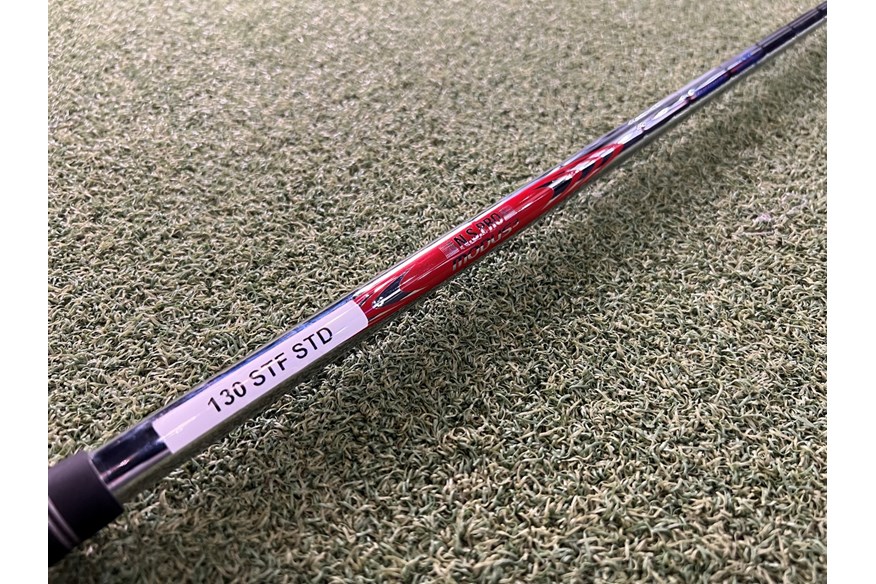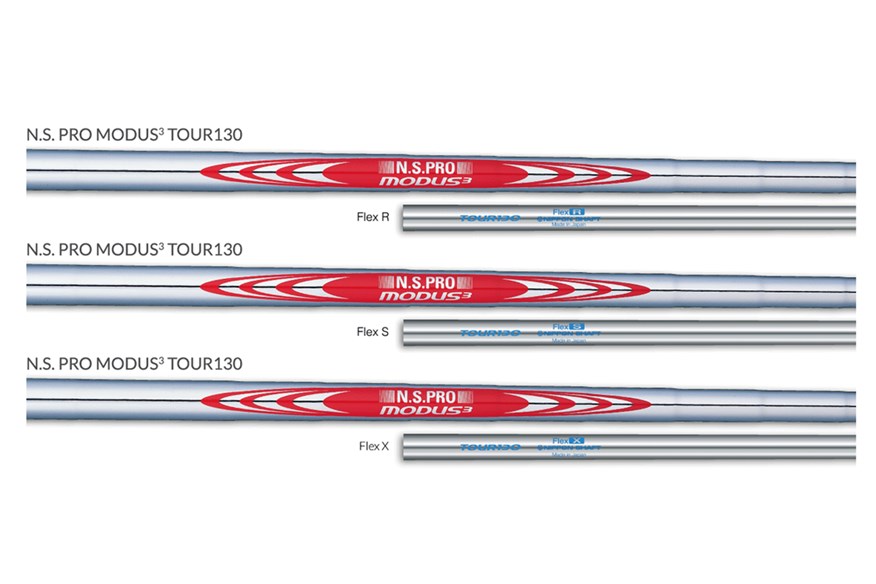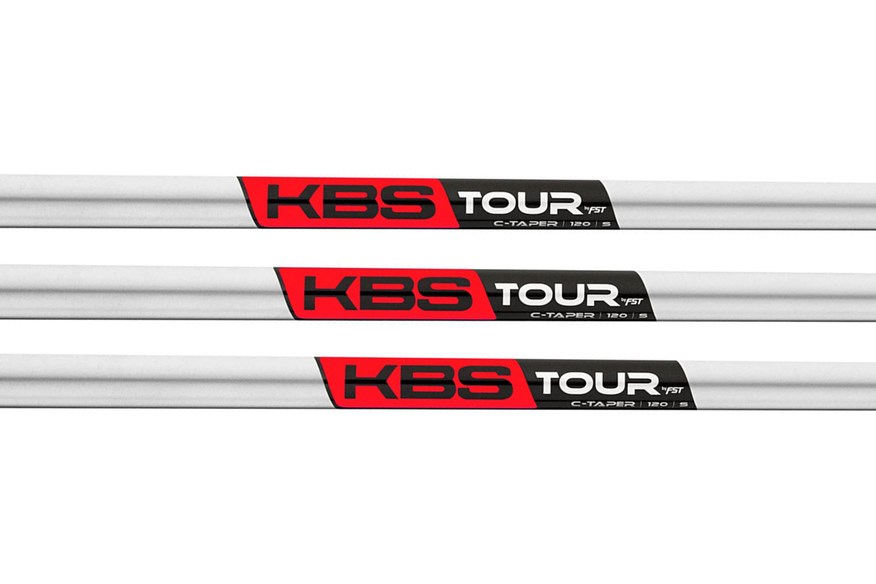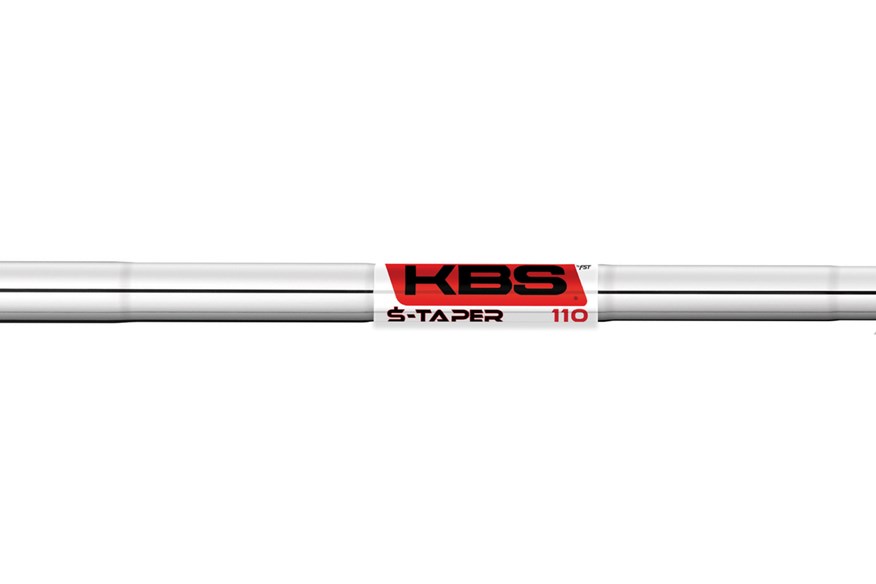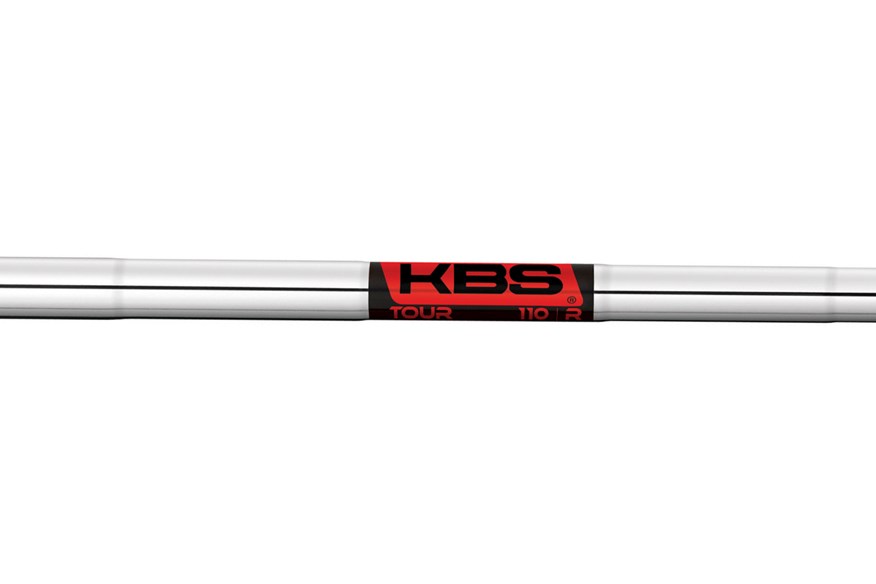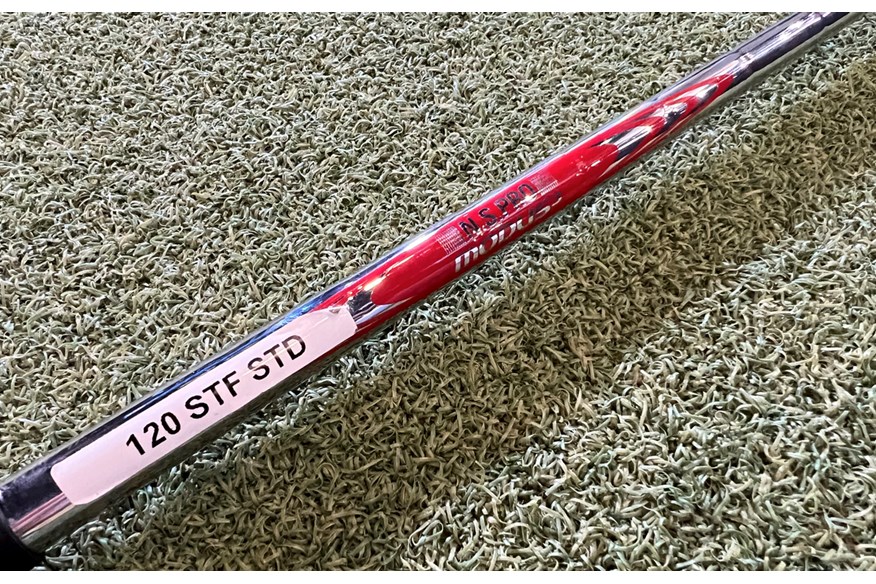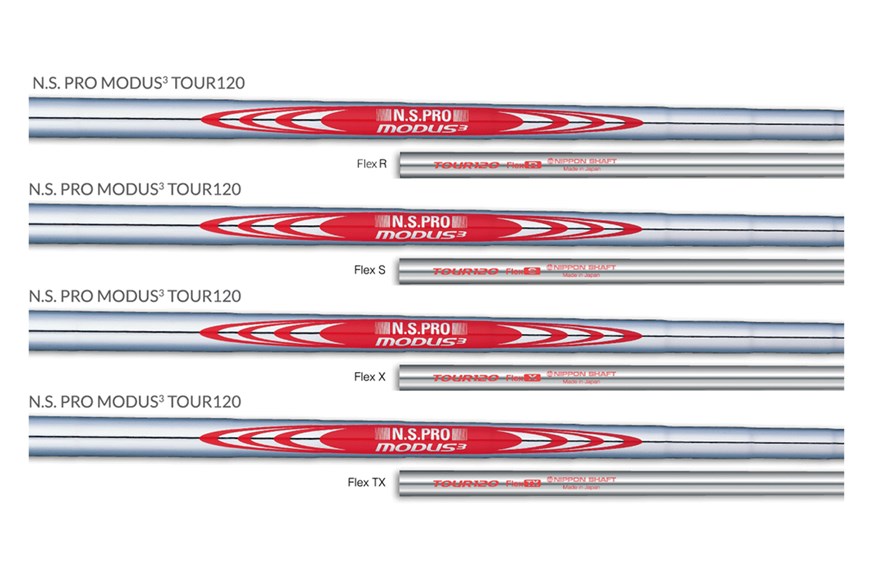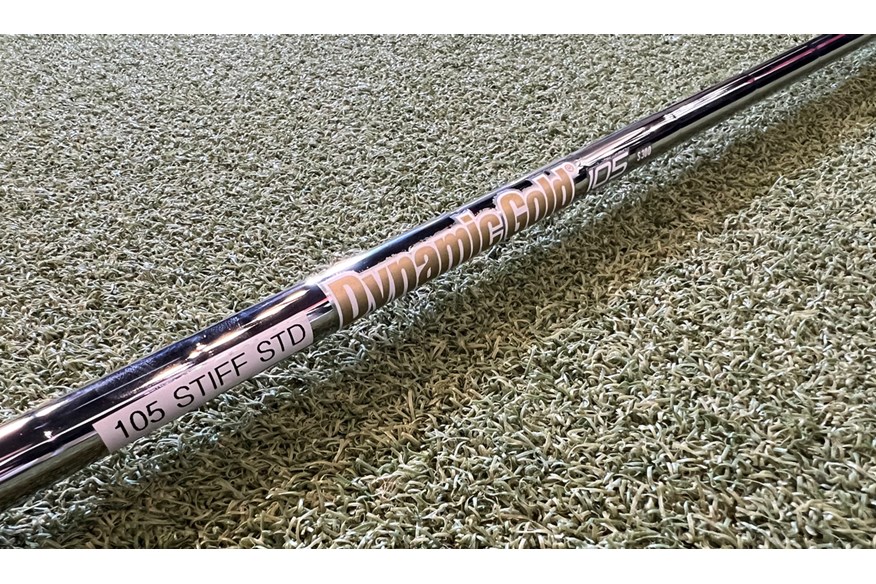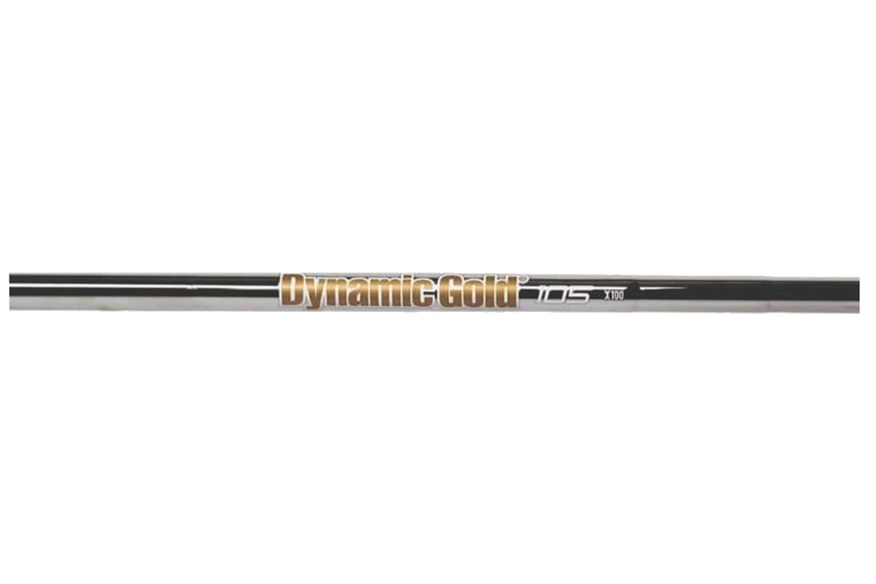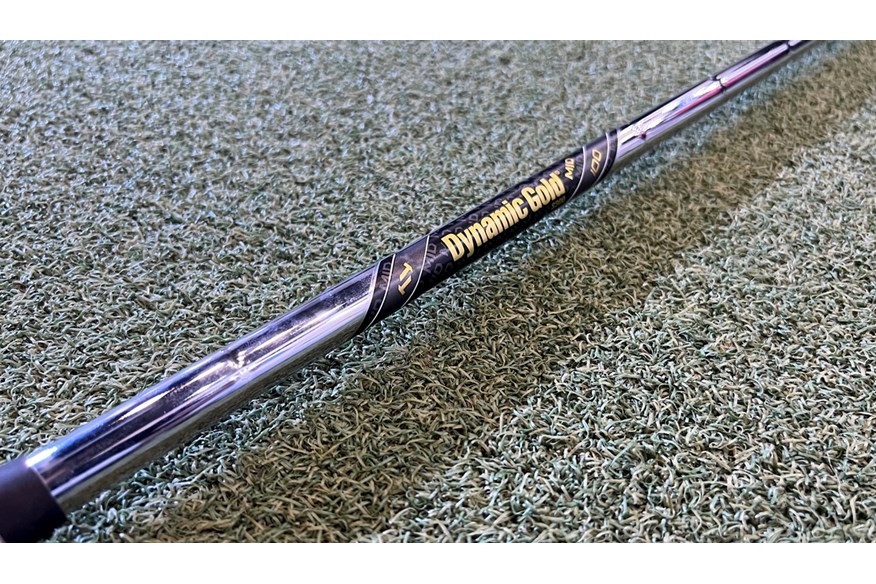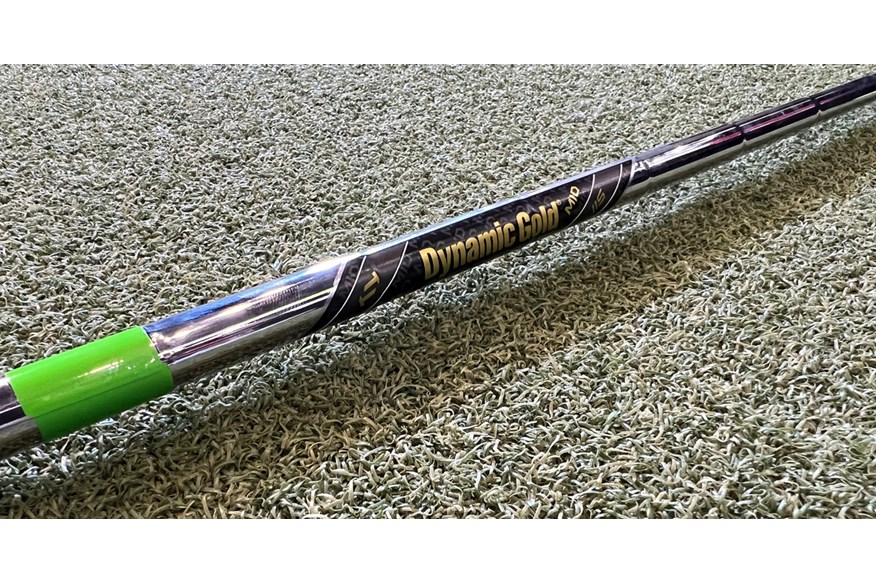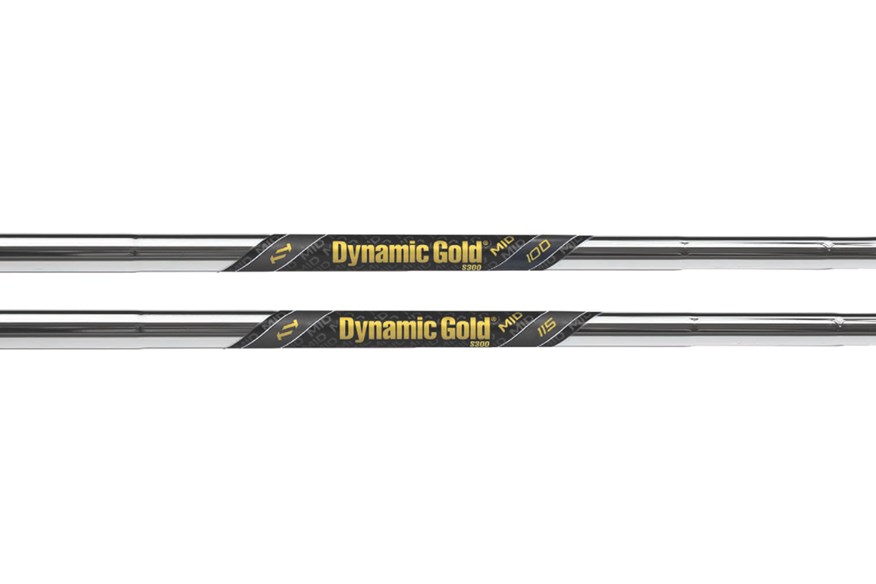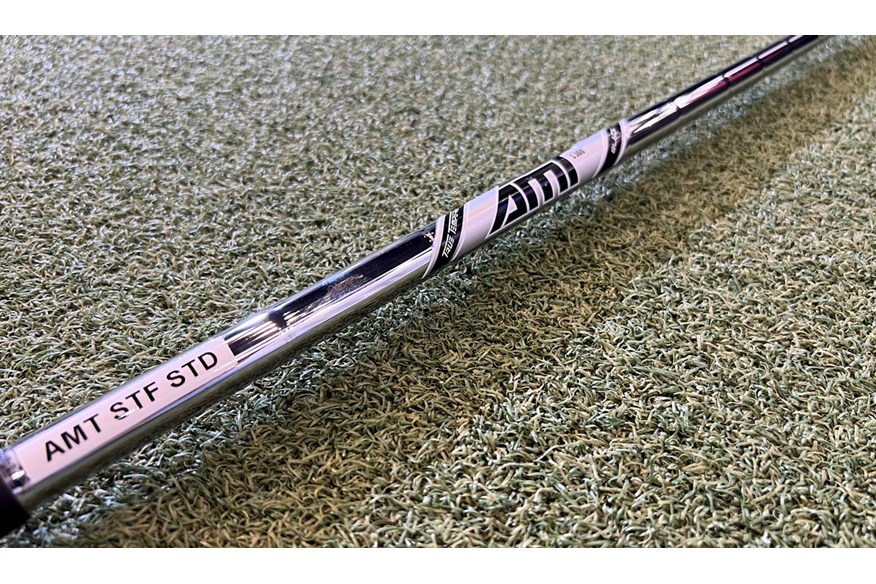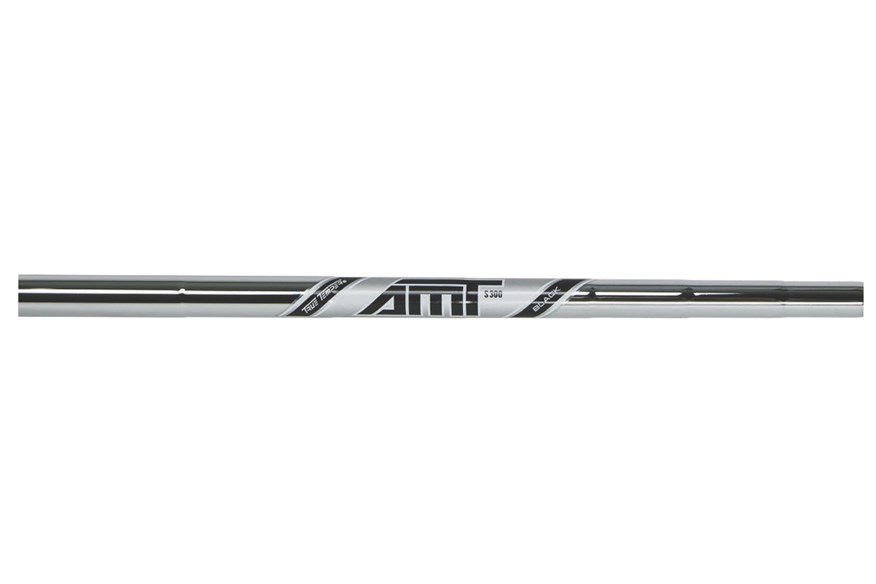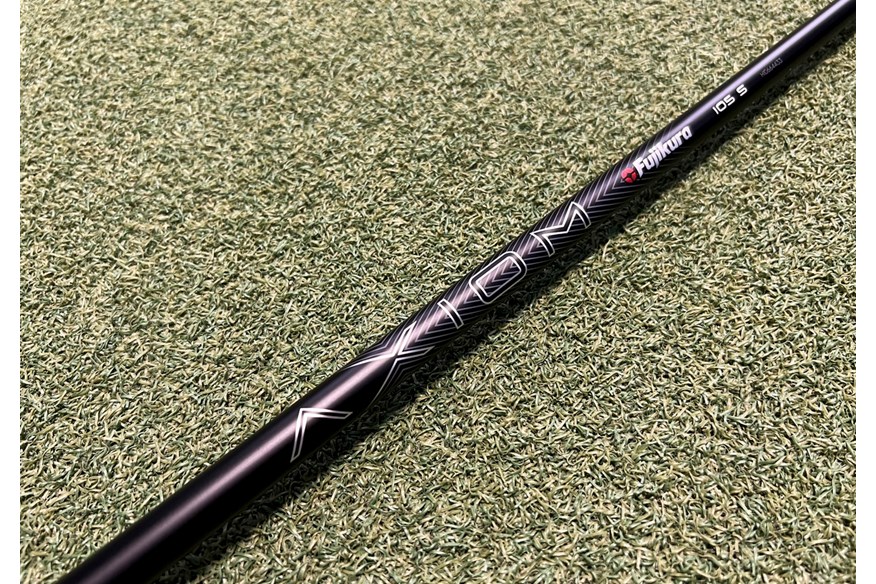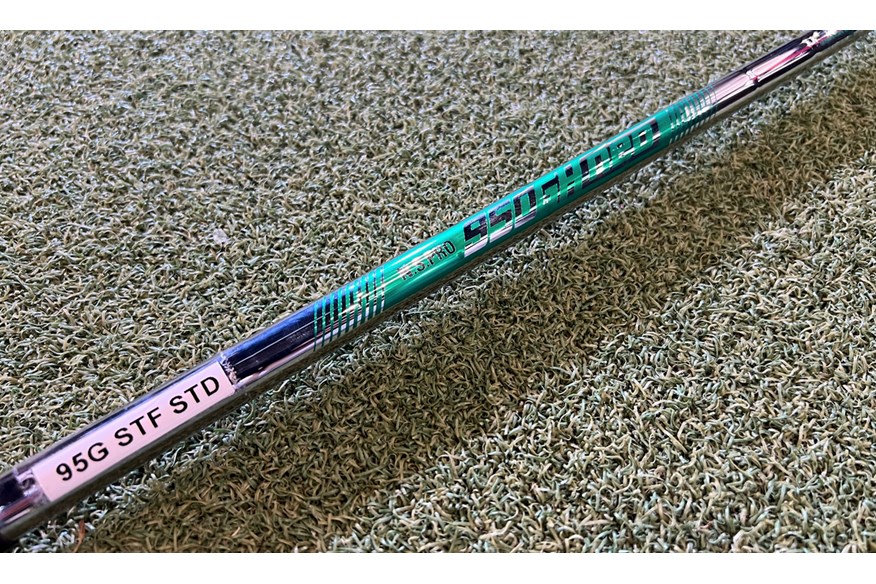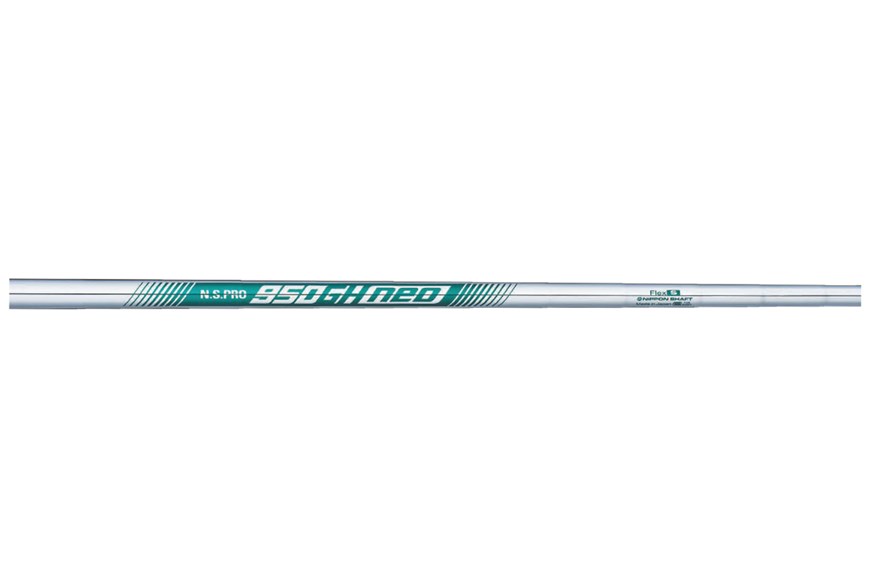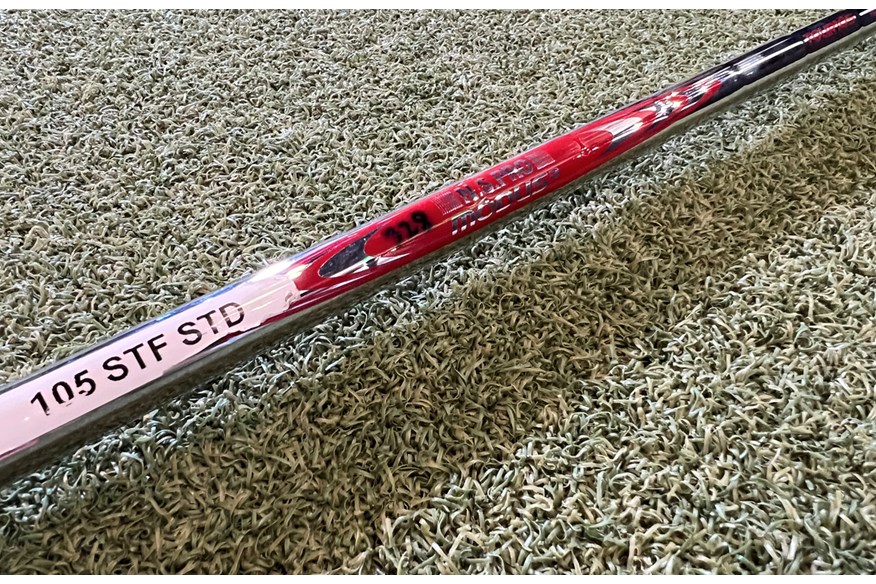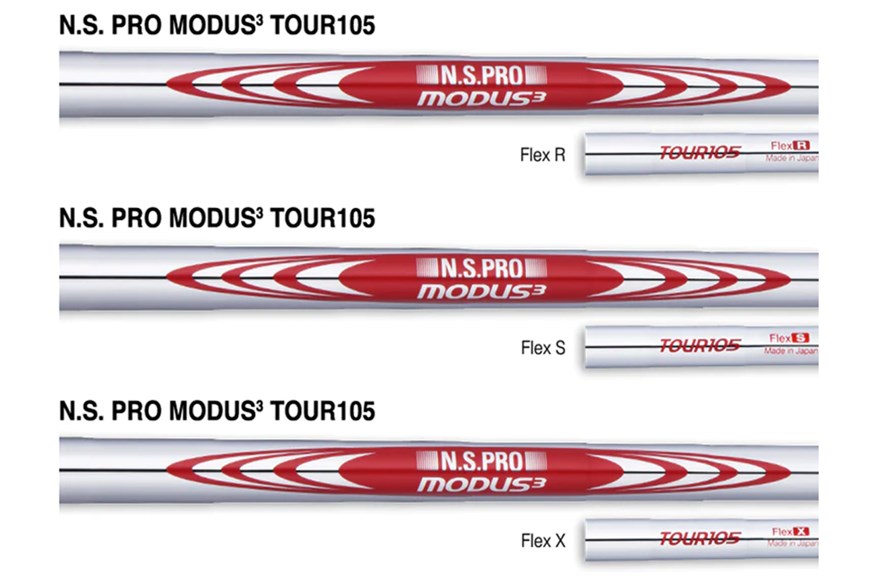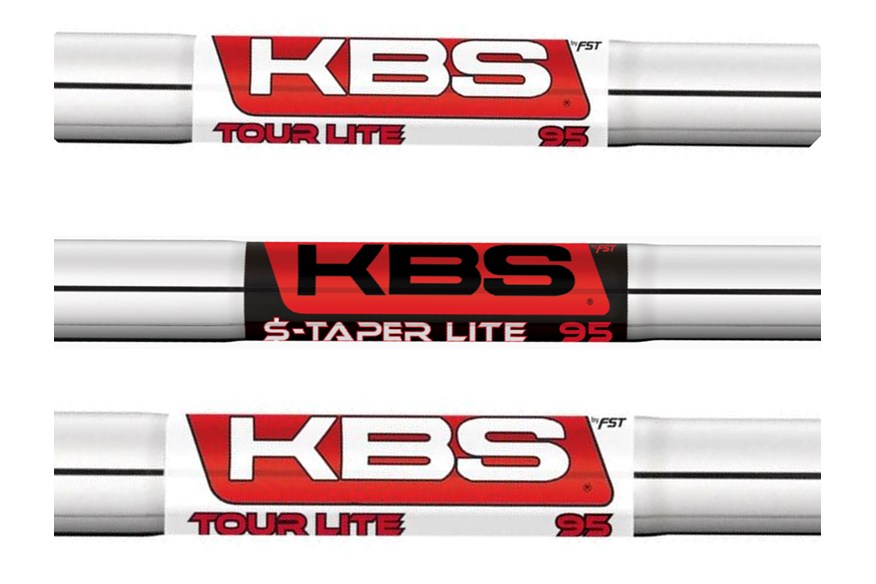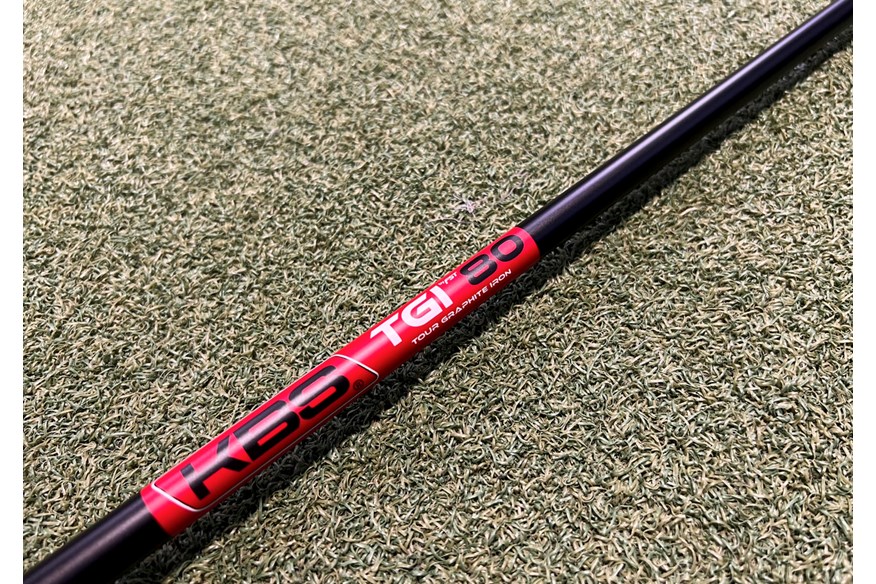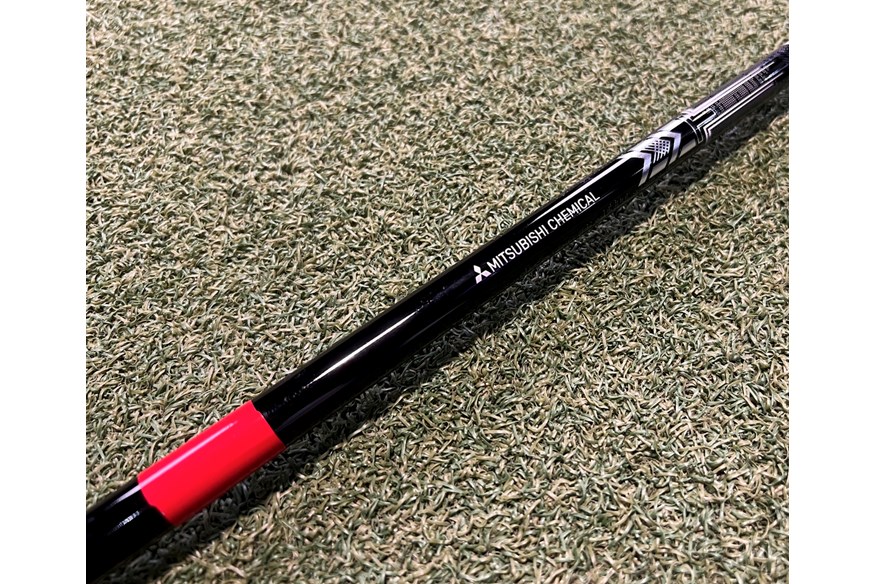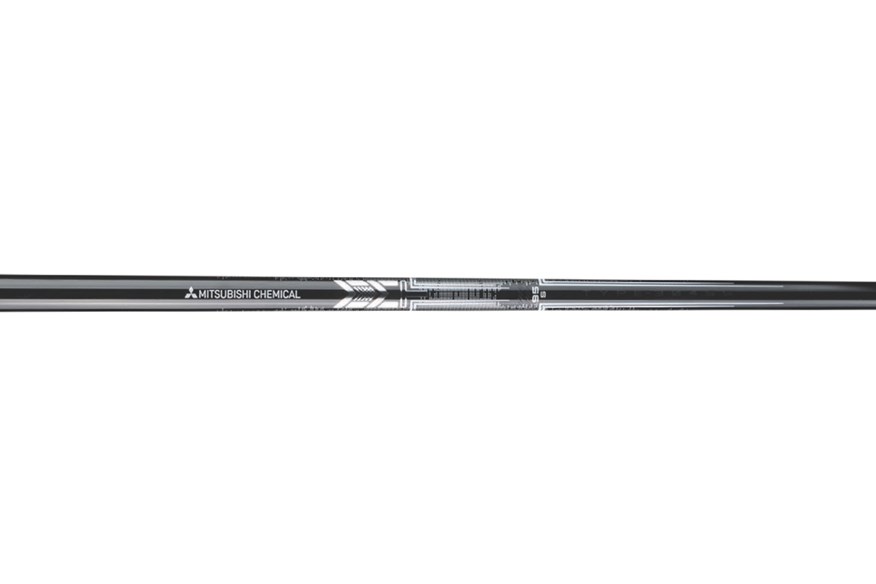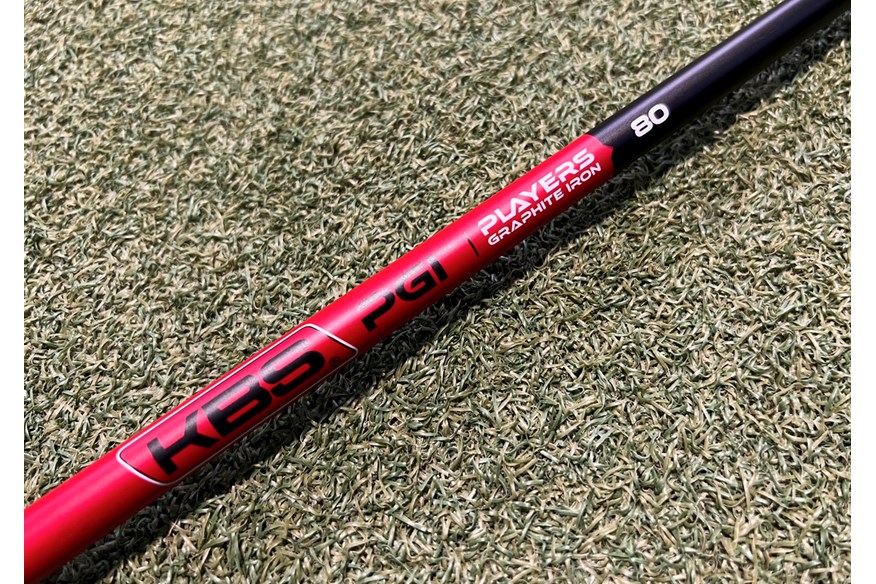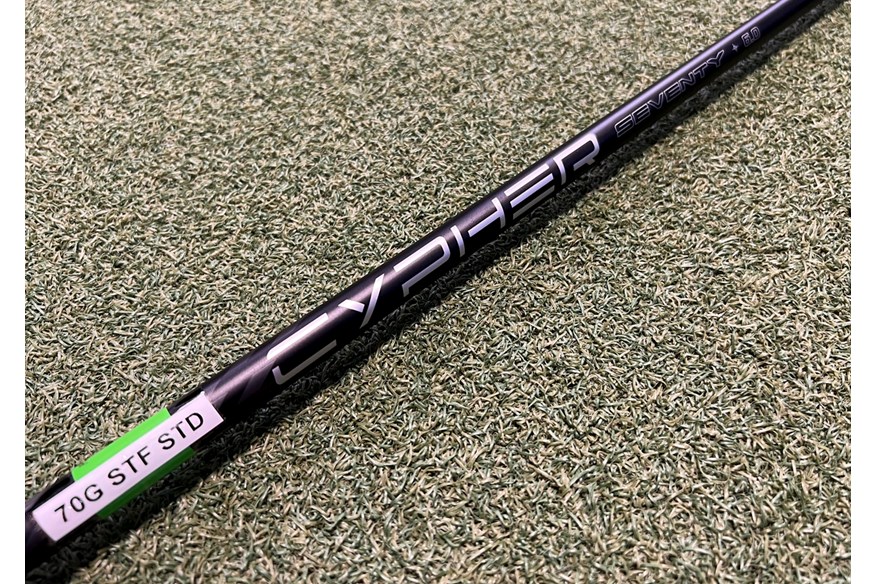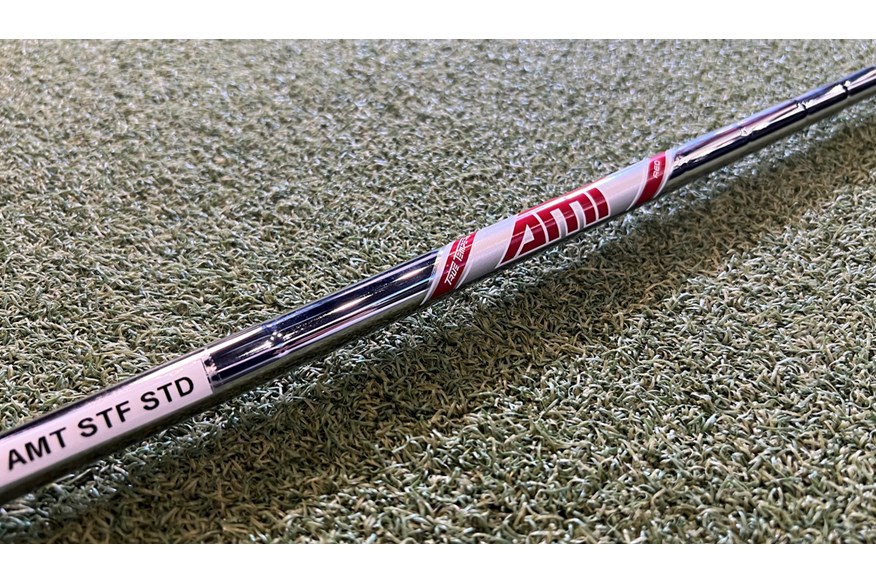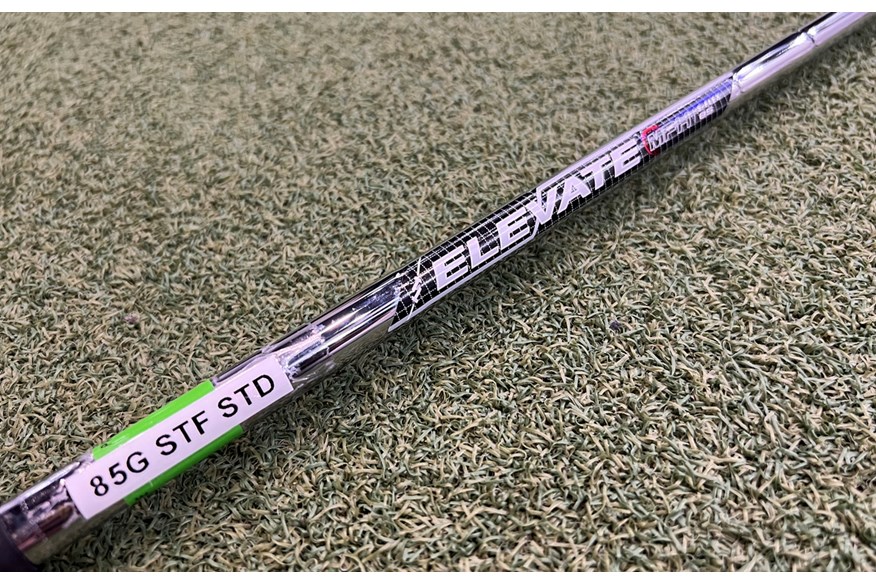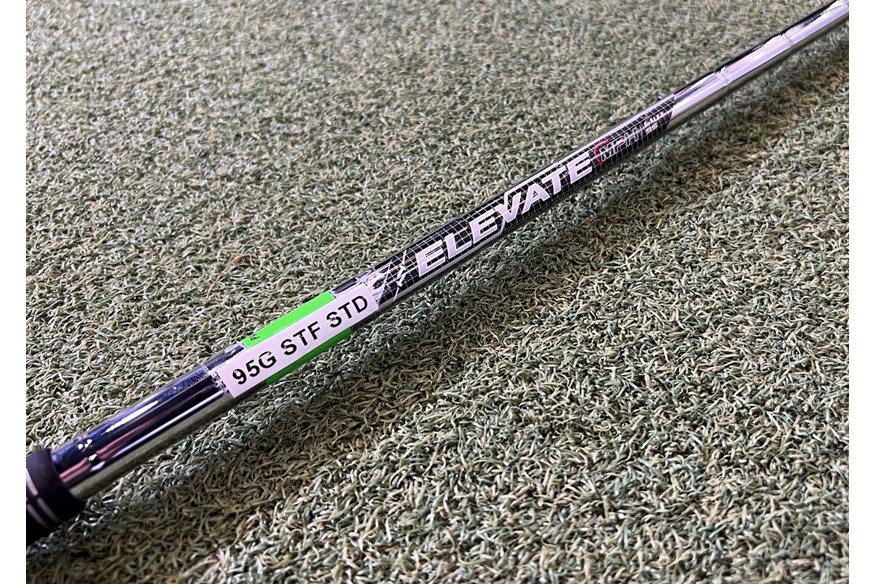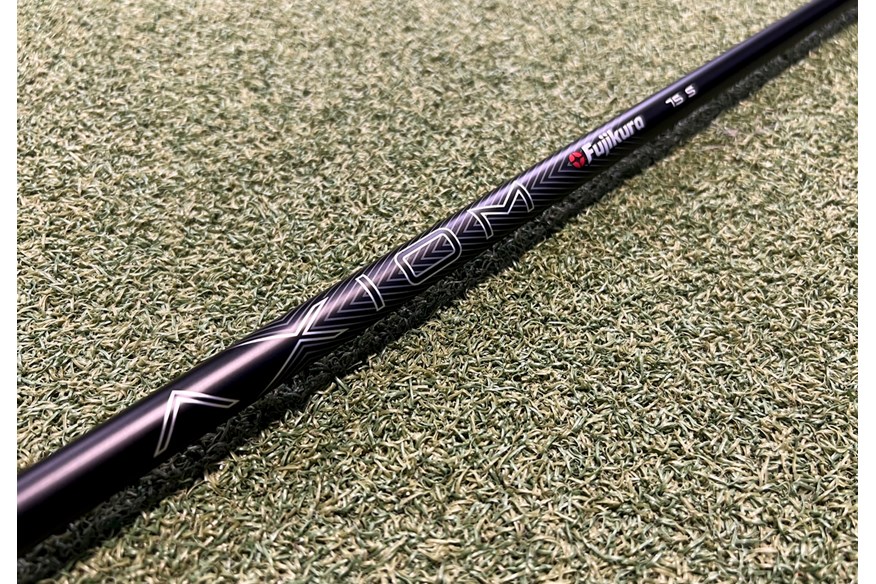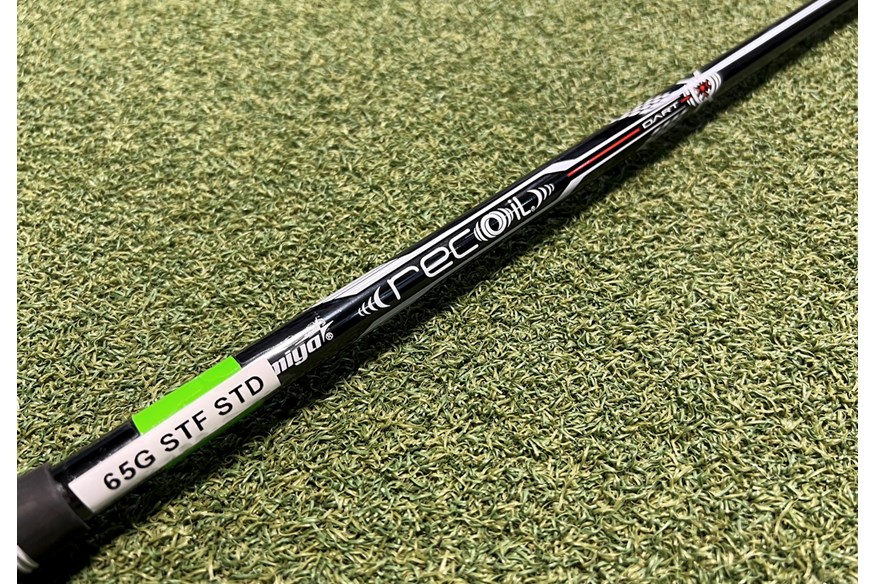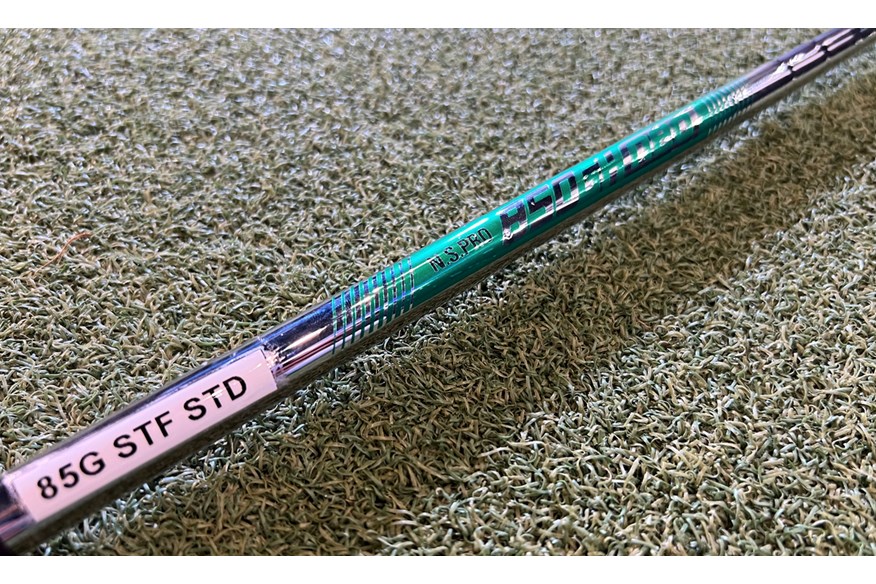Best Iron Shaft 2025: 34 models launch monitor tested
Last updated:
The correct shafts can help you hit golf irons further and straighter while boosting your scoring potential, here’s how to decide which best suits you in 2025.
BEST IRON SHAFT – JUMP TO:
- How we tested the best iron shaft
- What type of iron shaft do you need?
- Best Heavyweight iron shafts
- Best Mid-weight iron shafts
- Best Lightweight iron shafts
- Buying Guide & FAQs
It’s really important to understand there isn’t one best iron shaft out there to suit everybody, there are way too many options for that. But, there is a best iron shaft for each individual. Finding a shaft that compliments your speed, delivery and ability will optimize shot trajectory, carry distance and heighten your enjoyment of the game.
While the process of identifying the best iron shaft for you should always involve working with a good custom fitter, our guide highlights how different models perform in the hands of our test pro. The idea is to help highlight the models that could potentially suit you, thus saving time hitting shafts at the opposite end of the scale to where you need to be.
Choosing the best iron shaft to suit you comes down to many factors, get it right and it’s time well spent as like the best players in the world it’s highly likely you’ll play the same model for many years to come. With so many different factors to consider including feel, feedback, launch, spin, stability, and control, I explain the impact of each below.

Best iron shafts: our top picks
Here are the models we highlighted as the best on test:
Best heavyweight steel iron shaft for high-speed players: True Temper Dynamic Gold
Best heavyweight steel iron shaft for lowering ball flight: Project X
Best graphite iron shaft for high-speed players: Fujikura Axiom 125
Best mid-weight iron shaft: KBS Tour Lite
Best mid-weight graphite iron shaft: KBS TGI 80
Best lightweight iron shaft for average and slower-speed players: Nippon NS Pro 850 Neo
Best graphite iron shaft for average and slower-speed players: Fujikura Axiom 75
How we tested the best iron shafts
As TG Test Pro Neil Wain is a Callaway ambassador, and because we wanted to include as many different iron shafts as possible we traveled to the Callaway VIP fitting suite at the company’s Chessington HQ. Here we had a massive selection of the best iron shafts available rather than just the stock shafts in a fitting cart, and all the models were easily fitted into a Callaway Apex 24 CB 7-iron head that Neil would typically play.
We used Callaway Chrome Tour X golf balls, shots were hit from a mat into a simulator as a Foresight GC Quad launch monitor gathered data. We captured data from 12 shots our test pro was happy with from each different iron shaft model.
Read more on how TG tests golf equipment here.
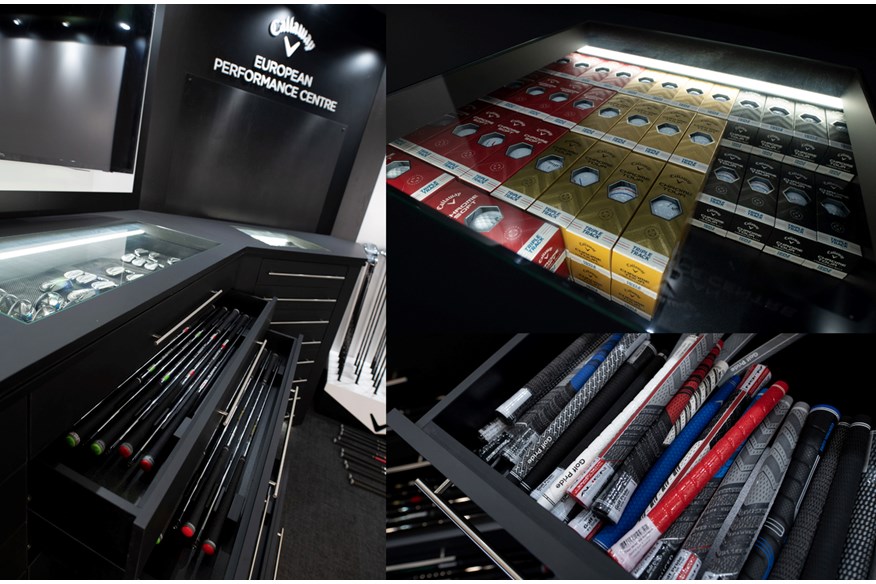
What type of iron shaft do you need?
All of the leading shaft manufacturers offer a wide range of iron shaft designs in different flight/bend profiles, weights, flexes, and materials, so how do you know where to start?
A great place to begin is weight as getting this wrong is likely to mean a drop-off in distance, consistency, and dispersion. Club Fitting Expert Jason MacNiven at Golf Principles told me “Hit a light, mid, and heavyweight shaft so you can feel the difference and gauge how different the results are. If light is good for you the shaft will feel lively and responsive. If it’s too heavy you’re likely to feel it’s hard work getting the club going and get the sensation you need your best swing to get decent results”.
Iron shafts tend to fall into three weight categories, and the target golfer for each is very different. By establishing which weight category best suits you, it’s possible to discount models within the other two to instantly narrow your choice and help you focus only on models that will complement your game.
Heavyweight iron shafts
A few decades ago lots of shafts fell into the heavyweight category as the tech wasn’t available to make good lightweight alternatives. The heavyweight category covers shafts that weigh in at over 120g. Today it’s perfectly possible to get both steel and graphite shaft options at this end of the scale.
Most often 120g+ shafts will best suit golfers with above-average swing speeds, these are the models also most typically found in lots of tour player’s irons, hence why they’re often referred to as tour weight shafts.
Notable models within the category appear within many of the best players’ irons of 2025 and include the True Temper Dynamic Gold, True Temper AMT Tour White, Project X, Project X LZ, KBS C-Taper, and KBS $-Taper.
Mid-weight iron shafts
To fall into the mid-weight category iron shafts need to generally tip the scales somewhere between 90g to 110g. There’s been a real trend towards this category not with brand-new shaft designs but with lighter models that historically fell into the heavyweight category. I’m talking about models like Dynamic Gold 105, Dynamic Gold Mid 100, and the whole family of KBS Lite models.
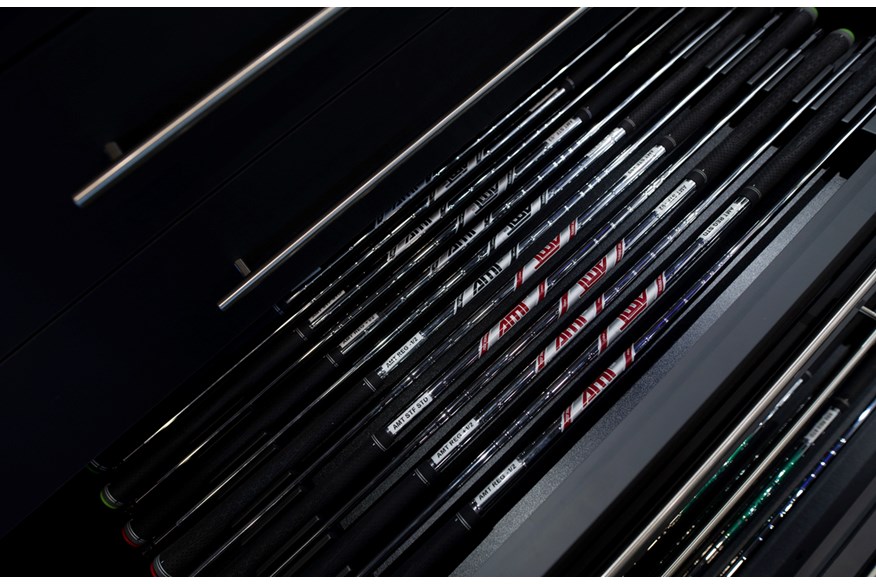
Most often shafts in this category will best suit average and above swing speeds and you’ll often find them in some of the best players’ distance irons of 2025. Notable models include Dynamic Gold 105, Nippon NS Pro Modus Tour 105, KBS Tour Lite, and Fujikura Axiom 105.
Lightweight iron shafts
It wasn’t that long ago sub 90g shafts were pretty much made of just graphite, but today it’s perfectly possible to produce lightweight steel shafts below this level too. Like most things in golf, there are no hard and fast rules saying that lightweight shafts have to be below 90g even though this is an accepted threshold for them, you will find several high-profile models that specifically target slower-speed players just above this level.
Lightweight shafts typically suit more average and slower speed players and are often found in stronger lofted irons, as their construction can make it possible to hit shots higher with more spin which keeps shots in the air for longer to maximize carry distance. Lightweight shafts can be found in lots of the best mid-handicap irons of 2025, notable models include the KBS Max and True Temper Elevate MPH.
Once you’ve found your weight dig into balance points
Many will say finding the right shaft weight is more important than finding the right flex in the modern game, once you’ve established what works for you it’s time to drill down into balance points. No matter whether you’re looking within the light, mid, or heavyweight categories there will be higher and lower launch/spin options available.
High bend point shafts will often have stiffer tip sections to lower launch and spin less, whereas low bend point models typically have softer tips to up launch and increase spin. By making the right choice you can get exactly the right ball flight for your game.
Should you use steel or graphite shafts?
Graphite is better at dampening vibration than steel so if shock, injury, or joint pain are part of your golf game graphite could well be a decent option. Historically graphite iron shafts have been lighter than steel, at their lightest they still are, but today it’s totally possible to get light, mid, and heavyweight graphite iron shafts which like the Fujikura Axiom promise better dispersion than steel thanks to more stable tip sections.
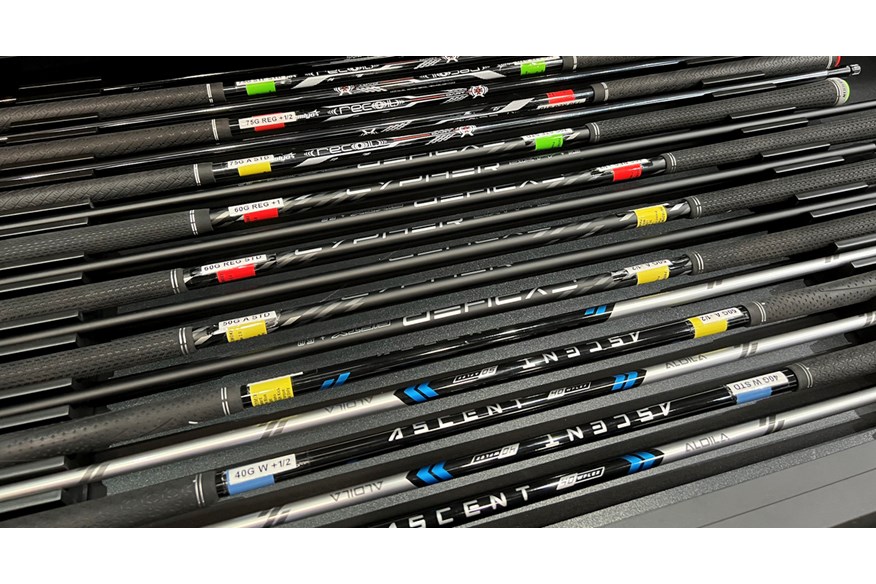
Traditionally graphite iron shafts have fallen into the hands of average and slower-speed golfers, yet we all have no issue using graphite driver and fairway wood shafts. Perceptions are changing quickly though, especially when one of the hardest hitters like Bryson DeChambeau is now playing graphite throughout his entire set.
If you’ve always used steel then the material is of course a sensible choice unless you are attracted to the shock-absorbing properties and potential greater accuracy attributes of graphite (from premium after-market models). No matter which way you go there’s steel and graphite shafts out there to suit all swing speeds no matter how you deliver the club at impact.
Best Iron Shafts 2025: Heavyweight (120g+)
The Dynamic Gold is a tour weight shaft with a stiff overall profile, it’s designed for players looking for a penetrating iron trajectory. Compared to the Project X the model has a slightly softer butt section, so it’s a good fit for strong players who like to feel the shaft load and unload.
Typically, golfers choose the Dynamic Gold over the Project X as they put more premium on a smoother feel, their game involves more shot shaping and their loading of the shaft is less aggressive.
Pros
- The most played iron shaft on tour
- Good for lowering ball flight
- A smooth feel with less spin and lower trajectory
Cons
- Not a good option for slower-speed players
| R 127g (Callaway Flight Code A1) | Launch: Low / Spin: Low |
| S 130g (Callaway Flight Code A1) | Launch: Low / Spin: Low |
| X 130g (Callaway Flight Code A1) | Launch: Low / Spin: Low |
Verdict: True Temper Dynamic Gold
There is no more classic iron shaft than the Dynamic Gold, decades after it first launched it’s still the most popular shaft out on tour. Much of the reason why so many people use this shaft is it’s a model they grew up playing, so many are reluctant to move on and try something different. Remember this model is heavy, don’t think the Dynamic Gold is for everyone, if your game could benefit from something a little lighter then there are plenty of other Dynamic Gold options like the DG 105 or DG Mid models out there.
As expected, our data has the model down as producing a little less spin and shot height than our test average plus a very slightly shallower descent angle. Consistency was good with just 7.8 yards between our test pro’s longest and shortest shots (2nd best), and the Dynamic Gold produced our 2nd tightest shot area (only the DG X100 was more accurate).
Interestingly in our test pro’s usual X100 flex the Dynamic Gold gave his smallest carry distance drop-off and smallest shot area of the entire heavyweight category, which has to highlight the impact of finding the perfect shaft model to compliment your game. If our test pro were ever tempted to switch to graphite iron shafts like the Fujikura Axiom 125 X (for the shock-dampening qualities) our data highlights a potential gain of 2.9 mph in ball speed and 5.6 yards of 7-iron carry distance on the table.
The Tour Issue is produced with weight tolerances of just +/-0.5g so it’s an elite premium product, hence the Tour Issue designation, and additional cost. Thanks to the complexities of having such tight tolerances this model is only available in two flexes a 132g S400 and a 130g X100.
True Temper says the tighter tolerances deliver more repeatable shots, more repeatability from shaft to shaft, and of course greater consistency. Scottie Scheffler, Brooks Koepka, and Justin Thomas all play the Tour Issue which says everything you need to know about who should be using them.
Pros
- A very precisely made product
- Tour validated
- A great option for lowering ball flight
Cons
- Only available in stiffer flexes
- A more expensive option
| S 132g (Callaway Flight Code A1) | Launch: Low / Spin: Mid |
| X 130g (Callaway Flight Code) | Launch: Low / Spinn: Mid |
Verdict: True Temper Dynamic Gold Tour Issue
Paying fortunes for golf equipment really isn’t everyone’s cup of tea but there are plenty of golfers out there who want the best money can buy. If that’s you and you’re in the game for a heavy tour-weight steel iron shaft, they simply don’t come with any tighter tolerances than the Dynamic Gold Tour Issue.
Based on our test pros feedback I reckon the vast majority of club golfers will struggle to feel a difference between the Tour Issue and the standard Dynamic Gold, but in the pro game where marginal gains mean the difference between winning millions or going home empty-handed it’s not surprising this model has many fans.
Taking into account that we used a human tester the Tour Issue’s numbers are very similar to the Dynamic Gold S300 which should be expected, as it’s only the tolerances of the shaft that are tighter, and there isn’t supposed to be a performance difference between the pair. The choice to buy into this tighter tolerance model really comes down to whether you want to go all out and create your ultimate set of irons, and how much you’re willing to pay for them.
The Project X is a low-launch, low-spin alternative to the Dynamic Gold. Players who gravitate towards this model tend to be players who aggressively load the shaft and players who enjoy really stiff and stout shafts that feel like they barely move during the swing.
If the Dynamic Gold is more for shot-makers and shapers, the X is often good for elite golfers who see shots in straighter lines with the ball falling one side or the other of their target line. Rory McIlroy, Jon Rahm, and Tommy Fleetwood all play Project X on tour.
Pros
- Tour validated
- Good for aggressive transition players
- There are tons of flex options
Cons
- Expect a harsher feel than a Dynamic Gold
| R 115g (Callaway Flight Code A1) | Launch: Low / Spin: Low |
| S 120g (Callaway Flight Code A1) | Launch: Low / Spin: Low |
| X 125g (Callaway Flight Code A1) | Launch: Low / Spin: Low |
Verdict: Project X
Project X may not quite have produced the lower launch and ball flight promised but data doesn’t always tell the story you want it to. Our results are very likely to be a reaction from our test pro using a shaft that doesn’t produce the high-hanging ball flight he enjoys, so he felt the need to ‘help’ shots into the air, which of course does not make the Project X a bad shaft.
What Project X did deliver is our 3rd highest ball speed and 3rd longest carry distance in the heavyweight category, which isn’t half bad considering the heavy, low launch, and low spin qualities of this shaft.
If lowering your ball flight and cutting spin (Project X was lower than our test averages on both counts) is your top priority Project X is a brilliant place to start your journey.
Where the standard Project X is stiff in the butt, mid and tip sections for a tight overall impact feel the LS has a unique profile so it’s a little softer in the butt section, and stiffer in the tip. Thanks to being the first iron shaft to have dual taper rates the outside diameter of the shaft changes multiple times, making it possible to soften an area just before the super stiff tip.
The whole idea is the LS lowers head deflection at high speeds, it also limits dynamic loft and lowers spin. The model is designed for stronger golfers so it’s only available in two flexes.
True Temper says the standard Project X is a good fit for golfers who don’t like to feel the shaft move during the swing, whereas thanks to a progressive tip section the LS can offer a slightly smoother feel much like the stepped Dynamic Gold. This is the lowest spinning iron shaft in the True Temper and Project X line-up.
Pros
- Great for very fast players
- A little more feel than the original Project X
- A very low-spin iron shaft
Cons
- Only an option for very hard hitters
| S 120g (Callaway Flight Code A1) | Launch: Low / Spin: Low |
| X 125g (Callaway Flight Code A1) | Launch: Low / Spin: Low |
Verdict: Project X LS
Our test data doesn’t quite support the thinking around the LS being the lowest spinning shaft in the True Temper line-up but data doesn’t always tell the story it is supposed to. With huge amounts of iron shaft choices in the heavy/tour weight category, this model feels like it will suit a niche group of fast, hard hitters who specifically want to control launch and spin.
I’d urge caution if you’re fitted into this model, just to ensure it works for you through the bag and not just in a demo 7-iron fitting head. There’s a reason the model has never appeared as a stock iron shaft option for any brand, that’s because the target bracket of golfers who need its low launch, low spin traits is incredibly small.
True Temper says golfers who are likely to favor this model will typically have slightly slower swing speeds than those playing the Project X or X LS (possibly between 70 to 80 mph with a 7-iron).
A more flexible tip section gives a really smooth feel, the IO is also the lightest Project X iron shaft available. Just be careful if you find yourself exploring different flexes within the family as each is designed for very different results.
Pros
- A Project X but more tailored to decent club golfers
- Launch and spin change for each flex
Cons
- If you're on the border between two flexes there will be a difference in launch and spin
| R 105g (Callaway Flight Code D4) | Launch: Mid-High / Spin: Mid-High |
| S 110g (Callaway Flight Code C3) | Launch: Mid / Spin: Mid |
| X 115g (Callaway Flight Code B2) | Launch: Mid-Low / Spin: Mid-Low |
Verdict: Project X IO
I really like the idea of each iron shaft within a set being optimized for its intended purpose, it’s an approach brands like TaylorMade take to optimize performance across each head of the P790. Just remember switching between flexes within the IO family means very different weight and launch profiles, which could spell out the IO not being the perfect option if you sit on the boundary between two weights or flexes.
The IO is an interesting option if you have a fairly smooth-paced iron swing, interestingly for our test pro the model upped launch and spin over our test averages yet the shot height was lower and descent angle shallower, so be sure you love its ball flight window before buying in.
Essentially the AMT is a ‘Flighted’ shaft as it gets lighter as it gets longer but unlike ‘Flighted’ models the bend point of the shaft doesn’t change.
Within the heavy-weight shaft arena, the AMT Tour White can be a good option for golfers who like how they hit their short irons but might struggle with the long irons. Don’t expect to feel a difference in weight between the 8 and 7 irons in a set, but you should notice the mid and long irons are less difficult to launch.
Pros
- Good if you struggle to flight long irons
- Expect more speed, launch, and spin from your long irons
Cons
- You'll need to like the progressive feel of lighter long irons and heavier short irons
| S 106g - 130g (Callaway Flight Code A1) | Launch: Low / Spin: Low |
| X 106 - 130g (Callaway Flight Code A1) | Launch: Low / Spin: Low |
Verdict: True Temper AMT White
Ascending Mass shafts are an interesting idea as effectively golfers get help at both ends of their bag, with some additional speed in the long irons and extra control from the short irons. However, from my experience, if you’re switching from a regular set of iron shafts the idea can take a bit of getting used as every iron shaft in your set (bar the 7-iron) is a slightly different weight to what you’re used to, which for some weight sensitive players can throw up some timing issues.
We had no such issues with our test pro, he hit the AMT White really nicely, and as our data suggests so long as you like the Ascending Mass idea the AMT can totally do a job for you.
From what I’ve seen it feels like the AMT family is a strong option for anyone who wants a little extra help from their long irons, the idea could be really useful for more moderate-speed players in the lighter AMT Red, but if you don’t use long irons there’s limited benefit here.
VeloCore stability tip technology migrates from Fujikura’s Ventus wood shafts, which the company says boosts MOI and tightens dispersion, whilst also improving energy transfer as the head deflects less at impact on off-center hits.
A long, mid, and short parallel tip system (Long 2-4 iron, Mid 5-7 iron, and Short 8-PW) ensures less premium material needs trimming from the tip section, helping create a constant weight set with incredibly good feel, sound, and feedback. You also get all the benefits of the shock-dampening properties of graphite shafts.
Currently, within this weight category, there is only one Axiom X flex choice, which might be a bit limiting for some really good players, but in time it’s highly likely more will be added.
Read our full Fujikura Axiom iron shaft review.
Pros
- Expect more shock dampening than steel
- Brilliant tip stability
- Great energy transfer
Cons
- At this weight, there's only one flex option
| X 125g | Launch: Low / Spin: Mid-Low |
Verdict: Fujikura Axiom 125
There haven’t been many graphite iron shafts that have come out and promised to offer better stability than steel shafts over the decades, but the Axiom does. If you’re a fan of the stability of the Fujikura Ventus wood shafts you’ll enjoy the Axiom too, as the same VeloCore tip technology features in both.
Apart from the benefits of increased shock dampening thanks to playing graphite iron shafts our data outlines why carbon fiber has been so popular at lower speeds for years. Compared to our heavyweight average the Axiom 125 produced a 1.5 mph faster ball speed and 2.8 yards more 7-iron carry distance, which are the real-world gains golfers see by switching to graphite. And when all other metrics remain virtually identical to the steel shaft averages in the category, why wouldn’t you switch?
Currently, if you want to play graphite at this weight you will need to play the Axiom in an X flex as that’s the only available option from Fujikura, but that could change in the future. Just remember the equivalent KBS Tour Graphite Iron shaft in an X flex comes out at 100g so the pair will feel different. Don’t be too hasty in comparing our numbers between KBS and Fujikura too, as the TGI is a stiff flex at 80 g whereas the Axiom is a 125g X.
The Modus Tour 130 is popular as its softer tip section gives a slightly higher shot trajectory in the heavy-weight arena, yet a very rigid mid and butt section delivers a good feel and power transfer.
Nippon says their raw steel material, the tight tolerances they work too, and the heat treatment they apply means golfers get improvements in distance, accuracy, and dispersion.
Pros
- A good option for adding shot height
- The accuracy and consistency of Nippon shafts is first-class
- Made from premium raw materials
Cons
- Not too many elite high-speed players want to increase their shot height
| S 124g (Callaway Flight Code B4) | Launch: Mid-High / Spin: Low-Mid |
| X 129g (Callaway Flight Code B4) | Launch: Mid-High / Spin: Low-Mid |
Verdict: Nippon NS Pro Modus Tour 130
Our data certainly doesn’t highlight the Tour 130 as being a slightly softer tip, higher launch option over the Dynamic Gold as Nippon said it was. But that could be because our test pros delivery is overpowering the softer tip and creating a very slightly lower flight rather than adding launch.
It doesn’t mean the shaft can’t do what it’s designed for, just make sure if you’re specifically looking for a slightly higher launching heavy/tour weight shaft you take the time and effort to ensure it does exactly what you want. Nippon iron shafts are fantastic quality and always made to tight tolerances. They aren’t used widely as stock options for many irons as they are a costly investment, but with at least a couple of options in the heavy/tour weight category the company has solutions to suit all comers.
The Tour is stiffest in the grip section (for a good feel), it gives mid-launch and mid-spin. The C-Taper is stiffest in the tip section (close to the head) to give a stout and strong feel and deliver low launch with low spin. The $-Taper fits neatly between the pair.
C stands for Constant Taper, so the shaft has no steps, which allows the C-Taper to have a strong and stout feel. Typically the model suits stronger golfers, and players can expect a 5% lower ball flight than True Temper’s Dynamic Gold.
Major winners Gary Woodland, and Justin Rose have played the C-Taper as has Rickie Fowler.
Read our full KBS iron shaft review.
Pros
- A tour-validated shaft
- Good for strong, high-speed players
- The satin finish is super sleek
Cons
- Expect a very stout feel
| R 110g (Swing Speed Guide 75 - 80 MPH) | Launch: Low / Spin: Low |
| R+ 115g (Swing Speed Guide 79 - 85 MPH) | Launch: Low / Spin: Low |
| S 120g (Swing Speed Guide 84 - 90 MPH) | Launch: Low / Spin: Low |
| S+ 125g (Swing Speed Guide 89 - 95 MPH) | Launch: Low / Spin: Low |
| X 130g (Swing Speed Guide 94 MPH and above) | Launch: Low / Spin: Low |
Verdict: KBS C-Taper
Kim Braly the founder of KBS is well known for wanting to offer every single golfer under the sun just the iron shaft solution they’re looking for. It’s exactly why KBS makes three heavy/tour weight shaft profiles so irrespective of weight golfers get the choice of a low, mid, or high launch option. With five flex and half flex choices, there’s plenty to go at of within the KBS heavy/tour weight shaft arena. The idea means there are absolutely zero compromises and golfers get to play iron shafts at the exact weight, feel, launch, and spin they desire.
The C-Taper is an absolute brute of an iron shaft, our test pro has tested it a number of times and always comments about the model being great when you’re bang on it, but really hard work when you’re not.
Don’t be fooled by our data showing the C-Taper producing the highest shot height and joint steepest descent angle in the heavy/tour weight category, this is a reaction from our test pro to knowing how demanding this model is to launch. So long as you specifically want a very stout feeling shaft, so there’s no movement of the shaft releasing through impact, the C-Taper is a fantastic and well-respected option for lowering ball flight.
Half flexes (R+ and S+) are brilliant for golfers who sit on the fence between two flexes. They alleviate decisions around whether to go regular flex for more distance or stiff for increased accuracy.
The $-Taper (Subtle Taper) produces a ball flight midway between the C-Taper (lowest launch and spin) and the Tour shaft (mid-launch and spin).
Read our full KBS iron shaft review.
Pros
- A strong mid-launch but low-spin option
- The R+ and S+ sub-flexes are a brilliant idea
- KBS allows you to choose the 'feel' of your iron shafts
Cons
- So long as the set-up suits you the $-Taper is hard to fault
| R 110g (Swing Speed Guide 75 - 80 MPH) | Launch: Mid / Spin: Low |
| R+ 115g (Swing Speed Guide 79 - 85 MPH) | Launch: Mid / Spin: Low |
| S 120g (Swing Speed Guide 84 - 90 MPH) | Launch: Mid / Spin: Low |
| S+ 125g (Swing Speed Guide 89 - 95 MPH) | Launch: Mid / Spin: Low |
| X 130g (Swing Speed Guide 94 MPH and above) | Launch: Mid / Spin: Low |
Verdict: KBS $-Taper
With 13 shafts tested in the heavy/tour weight category, all of which cater to similar higher speed and stronger golfers it’s difficult for any single model to really stand out. Yes, the $-Taper was our 5th longest shaft in the category, but nobody should be quibbling over a couple of yards of variance between it and the longest (the Fujikura Axiom 125 X).
Our data spells out how similar this model is to the Dynamic Gold S300. With the exception of ball speed (where the $-Taper is 1.1 mph faster) all other metrics are virtually identical, which has to say the $-Taper will be a very strong alternative to the legendary Dynamic Gold.
Although it feels like the KBS Tour iron shaft has been around for ages (it launched in 2008), so golfers can be prone to discounting it in favor of newer designs, our data shows what it brings to the table versus the $-Taper. With a higher launch, very slightly more spin, more shot height and a steeper landing angle the Tour is still a very solid choice for a vast array of golfers shopping within the heavy/tour weight space.
Thanks to being a high balance point model (so weight is positioned closer to the grip), golfers get a slightly softer feel and good feedback at the top of the swing.
A further Tour FLT (Flighted) shaft model launches long irons higher and short irons lower for a more optimized set.
Read our full KBS iron shaft review.
Pros
- Expect good feel
- A brilliant choice for lots of reasonable club golfers
- There's a ton of options
Cons
- A very difficult shaft to fault
| R 110g (Swing Speed Guide 75 - 80 MPH) | Launch: Mid / Spin: Mid |
| R+ 115g (Swing Speed Guide 79 - 85 MPH) | Launch: Mid / Spin: Mid |
| S 120g (Swing Speed Guide 84 - 90 MPH) | Launch: Mid / Spin: Mid |
| S+ 125g (Swing Speed Guide 89 - 95 MPH) | Launch: Mid / Spin: Mid |
| X 130g (Swing Speed guide 94 MPH and above) | Launch: Mid / Spin: Mid |
Verdict: KBS Tour
After developing and designing the original stepless Precision Rifle shaft which has now given birth to the popular Project X it’s incredible how shaft genius Kim Braly has gone off and created the stepped Tour and had a similar impact.
It should not go unnoticed the Tour produced the fastest ball speed of any shaft in the heavy/tour weight category. It also upped launch by 2.4%, height by 3.7%, and descent angle by 1% over and above our test averages.
In my book, that means unless you’re specifically looking for iron shafts that deliver a more penetrating ball flight the Tour is a fantastic option. With our 3rd best carry distance drop-off (8 yards), and a shot area 16.9% smaller than our test average the Tour will be a reliable and consistent on-course performer.
Unlike the heavier Modus Tour 130, the 120 has a stiffer tip section to minimize unwanted spin, so you will need some good levels of speed to get a strong trajectory from this model.
Less stiffness in the mid and butt sections means golfers can control shots at any tempo but also get a smooth, comfortable impact feel. Both Tyrrell Hatton and Tony Finau play this Nippon NS Pro Modus shaft on tour.
Pros
- The 120 are tour validated
- A good choice to lower ball flight without moving into heavy-weight shafts
- Nippon shafts are always premium quality
Cons
- You will need speed to launch this model in the mid-weight category
| S 114g (Callaway Flight Code B2) | Launch: Low-Mid / Spin: Low-Mid |
| X 120g (Callaway Flight Code B2) | Launch: Low-Mid / Low-Mid |
Verdict: Nippon NS Pro Modus Tour 120
There’s a huge amount of good shaft choices within the heavy-tour weight category and it could well be argued you won’t go too far wrong by choosing a middle-of-the-road performer like the Tour 120. But it’s because of the Tour 120 underlying traits that I’d urge a fitting to really optimize your approach play. If you generate too much iron spin then absolutely this model can help control it just as Nippon promise.
However, the number of club golfers who generate too much iron spin is limited and when you see our test pros lower than average shot height and shallower descent angle we start to build a picture of this model offering up a specific type of lower ball flight performance, especially when lots within the game believe higher and straighter is the way to go.
I’m not saying the model should not be a consideration, just go into it with your eyes open and understand what cutting spin means in real-world terms.
Best Iron Shafts 2025: Mid-Weight (90 – 110g)
The 105, like the 120 and 95 comes with all the same feel and playability traits as the original Dynamic Gold it just tips the scales at less weight. It’s a good option for golfers who might have played Dynamic Gold before and liked the smooth feel, yet now need to play a slightly lighter shaft due to age or injury.
If you’re trying this weight it would make a lot of sense to try both the lighter (95) and heavier version (120) at the same time, so you can gauge the impact of weight on your iron game. If you have a tendency to tire later in the round a slightly lighter shaft could well be worth exploring.
Pros
- The lighter weight will benefit lots of club golfers
- Expect a smooth feel
- Extra launch and spin help optimize distance and stopping power at above-average speeds
Cons
- You will need to try lighter and heavier versions to know the model is right for you
| R 101g (Callaway Flight Code C2) | Launch: Low-Mid / Spin: Mid |
| S 103g (Callaway Flight Code C2) | Launch: Low-Mid / Spin: Mid |
Verdict: True Temper Dynamic Gold 105
Read into our test data and you’ll spot a number of shaft models that didn’t quite deliver on their higher launch, higher spin, or higher ball flight promise, but that’s down to how our test pro presents the club at impact, not the design of the shaft. Hopefully, that point alone serves as a reminder that working with a professional fitter to optimize your personal set-up is always preferable to buying off a manufacturer’s spec sheet.
As someone who played the Dynamic Gold as a junior, it’s lovely to see True Temper bring this legendary profile in at lighter weights, if I wanted a similar feel today it’s perfectly possible to slip into a 105 or 95 within this new family and get a smooth DG feel.
Compared to the heavier Dynamic Gold S300 the 105 added a smidge more ball speed (0.2mph) and 2 yards of extra carry distance, a gap that would typically grow should your swing speed be lower than our test pros and you could benefit from a slightly lighter shaft. Think of the 105 as a good fit for some of the best players’ distance irons around (it’s the stock shaft in the TaylorMade P790) and you’ll have a very good idea of who it targets.
True Temper’s engineers achieve that by creating a stiffer mid-section and teaming it with a more active tip section, so golfers can expect more initial launch and additional spin plus a slightly softer feel too.
Pros
- A great choice for increasing launch and spin
- They marry well with strong loft irons and low spin balls
- Many club golfers will appreciate the slightly softer feel
Cons
- A very difficult model to fault
| Mid 100 R 105g (Callaway Flight Code C3) | Launch: Mid / Spin: Mid |
| Mid 100 S 106g (Callaway Flight Code C3) | Launch: Mid / Spin: Mid |
| Mid 115 R 114g (Callaway Flight Code C3) | Launch: Mid / Spin: Mid |
| Mid 115 S 115g (Callaway Flight Code C3) | Launch: Mid / Spin: Mid |
| Mid 115 X 116g (Callaway Flight Code C3) | Launch: Mid / Spin: Mid |
Verdict: True Temper Dynamic Gold Mid 100 and 115
We didn’t quite see the results we were expecting from the new Dynamic Gold Mid family but that just means there are models out there better suited to our test pro than this new mid-launch option.
As the stock shaft in the new TaylorMade P7CB/P770 and Callaway Apex AI200/AI300 irons, this model is seen as a decent fit for modern-day players’ distance irons, as its slightly higher launch and spin properties are a better fit for stronger lofted irons than the standard low launch, low spin Dynamic Gold that might appear in the best players’ irons.
Don’t be put off by our results I have it on good authority this is a stable and strong iron shaft choice in 2025.
Essentially the AMT is a ‘Flighted’ shaft as it gets lighter it gets longer but unlike ‘Flighted’ models the bend point of the shaft doesn’t change. Within the mid-weight shaft arena, the AMT Black is a good option for golfers who don’t necessarily want to hit shots higher or lower, but would like some extra help launching their long irons.
This model is the stock shaft option in Titleist’s 2023 T200 Players Distance iron.
Pros
- Enjoy extra help launching your long irons
- A very solid choice if you don't need help hitting irons higher or lower
Cons
- You will need to 'time' your longer irons as they will be lighter
| R 94g - 115g (Callaway Flight Code C4) | Launch: Mid-High / Spin: Mid |
| S 95g - 116g (Callaway Flight Code C4) | Launch: Mid-High / Spin: Mid |
Verdict: True Temper AMT Black
It’s really tough to hand-on-heart recommend shafts like the AMT where they bring something slightly different to the iron shaft party, especially so when there’s really strong opposition from well-established models like the Dynamic Gold and KBS.
Absolutely if you try and like the AMT Black and it brings something extra to your long and short iron game grab it with both hands. My gut feeling though is not too many decent golfers actively go out searching for Ascending Mass Technology in their irons (the idea has been around for a good number of years now without blowing up), so unless you see the benefit and like the idea of your iron shafts getting progressively lighter there are other models I’d want in a set of irons before the AMT Black.
Interestingly the Black at 68.4 SQ YDS (57.8% tighter than our test average) produced the smallest shot area of the mid-weight category, this doesn’t mean the model is supremely accurate, our data shows our test pro hit the model incredibly well.
VeloCore stability tip technology migrates from Fujikura’s Ventus wood shafts, which the company says boosts MOI and tightens dispersion, whilst also improving energy transfer as the head deflects less at impact on off-center hits.
A long, mid, and short parallel tip system (Long 2-4 iron, Mid 5-7 iron, and Short 8-PW) ensures less premium material needs trimming from the tip section, helping create a constant weight set with incredibly good feel, sound, and feedback. You also get all the benefits of the shock-dampening properties of a graphite shaft.
I’d urge anyone getting fit for new irons and looking at shafts in the mid-weight category to hit the Axiom 105 too. It might well be the first graphite iron shaft you’ve tried but only by hitting them will you know your reaction to their vibration dampening qualities. If you already enjoy the brand's Ventus wood models you will likely enjoy them.
Read our full Fujikura Axiom iron shaft review.
Pros
- Enjoy the shock-dampening qualities of graphite
- The tip stiffness is super stable to minimize dispersion
- THE modern-day graphite iron shaft
Cons
- As they're a premium product they will always command an upcharge
| S 105g | Launch: Mid-Low / Spin: Mid-Low |
| X 105g | Launch: Mid-Low / Spin: Mid-Low |
Verdict: Fujikura Axiom 105
Just a few years ago tons of club golfers would have told you they can’t play graphite shafts as they’re just not stable enough to deliver consistent on-course results, the Axiom has changed that sort of thinking for good. Across our three weight categories, the Axiom bettered our shot area test average by 21.7%, 5.7%, and 27.9% (from heavy to mid and lightweight) which has to say something about the model’s stability and ability to reduce the twisting of off-center hits.
I’m absolutely not saying every golfer should be playing graphite iron shafts but models like the Axiom make it possible for any golfer to now benefit from graphite without having to worry about compromising consistency.
Aside from shot area, the 105 was pretty much bang on test averages for all other metrics which has to say the model could have mass market appeal. Of course, the Axiom is not available yet as a stock option in any iron so it will need to be an after-market upgrade or you’ll need to find an independent fitter who can build them for you.
A more rigid mid-section and flexible tip generate a higher launch with good spin so iron shots land soft when they hit the green. Nippon likes to say the Neo matches the needs of average golfers.
Pros
- A good option if your iron shots struggle for height
- A good match for stronger lofts and lower-spin golf balls
- A high-quality mid-weight choice
Cons
- So long as mid-high launch and spin suit your game the Neo is tough to fault
| R 94.5g (Callaway Flight Code D4) | Launch: Mid-High / Spin: Mid-High |
| S 98g (Callaway Flight Code D4) | Launch: Mid-High / Spin: Mid-High |
Verdict: Nippon NS Pro 950 Neo
The 950 Neo pretty much performed exactly as Nippon said it would. Our test data highlights the model increasing launch, spin, shot height, and descent angle compared to our test average, which should spell out how the model is a very strong option for golfers looking for a higher ball flight or those exploring stronger lofted irons.
Impressively this model produced 10.6% more backspin than the lowest spinning shaft in the category which gives an excellent indication of how much is put on the line by making the wrong shaft choice.
Nippon shafts aren’t always easy to find at retail, but from what I’ve seen in this test there’s a model within their range that is more than capable of doing a decent job for you no matter what you’re looking to achieve ball flight-wise.
If you need any reassurance on the 950’s credentials our test pro reckoned both the 850 and 950 felt incredibly stable, even if he needed to really lean on one to make a carry.
Where the Tour 130 goes after a higher launch the 105 produces a much flatter ball flight with mid-launch and spin properties. As with all of Nippon’s shafts you’re buying into Japanese quality craftsmanship and expertise.
To my mind, the 105 is well worth exploring if you’re working on controlling ball flight, or you want to try and add some additional speed to your iron game without dropping down to a lightweight model.
Pros
- Good for upping ball speed without going very lightweight
- Decent players love the flatter ball flight
- Nippon shafts are always quality offerings
Cons
- You might well need to factor in an upcharge
| R 103g (Callaway Flight Code B3) | Launch: Mid / Spin: Low-Mid |
| S 106.5g (Callaway Flight Code B3) | Launch: Mid / Spin: Low-Mid |
| X 112g (Callaway Flight Code B3) | Launch: Mid / Spin: Low-Mid |
Verdict: Nippon NS Pro Modus Tour 105
It can be really confusing trying to understand and decipher the differences between each shaft and who they are aimed at, which is why I’d always recommend working with a quality fitter to understand how to optimize performance from a shaft fitting, do not just plump for the Tour 105 as a lighter version of the Tour 120 or 130.
Our test pro isn’t looking to hit shots on a flatter trajectory as his game is all about flighting shots on a hanging ball flight, so it’s not too surprising this model didn’t rip up any trees for him. However, thanks to the slightly lighter weight the 105 did notch up a T3 for ball speed which is just the sort of result it is designed to produce.
After seeing the 105 in action I’d say think carefully about why you’d put this model in play. If you’re an above-average speed player looking to use lighter shafts it could well be a good option in a set of weaker lofted players’ irons. If speed isn’t your strength though inserting the 105 into a set of stronger lofted players’ distance irons might well not be the best idea.
Best mid-weight iron shaft
For players who don’t go at iron shots full tilt, the KBS Lite models can be a really good option as club speeds increase and shots launch higher. Lite models and aging typically go hand-in-hand too.
If you happen to overload the shaft you’ll know because shots will start turning over left of the target (for a right-handed golfer). Also, think about launch windows. A strong but very low launch player could see benefits by going Lite but in a strong flex to up launch and ball flight.
Read our full KBS iron shaft review.
Pros
- There's a KBS iron shaft to suit everybody
- The Lite models are great for upping launch
- Three Lite models allow you to choose the 'feel' of your iron shafts
Cons
- Not too many places stock every KBS option
| Tour Lite R 95g (Swing Speed Guide 75 - 79 MPH) | Launch: Mid-High / Spin: Mid-High |
| Tour Lite S 100g (Swing Speed Guide 78 - 81 MPH) | Launch: Mid-High / Spin: Mid-High |
| Tour Lite X 105g (Swing Speed Guide 80 - 83 MPH) | Launch: Mid-High / Spin: Mid-High |
| $-Taper Lite R 95g (Swing Speed Guide 75 - 79 MPH) | Launch: Mid-High / Spin: Low-Mid |
| $-Taper Lite S 100g (Swing Speed Guide 78 - 82 MPH) | Launch: Mid-High / Spin: Low-Mid |
| $-Taper Lite X 105g (Swing Speed Guide 81 - 85 MPH) | Launch: Mid-High / Spin: Low-Mid |
| C-Taper Lite R 105g (Swing Speed Guide 78 - 82 MPH) | Launch: Mid-High / Spin: Low-Mid |
| C-Taper Lite S 110g (Swing Speed Guide 81 - 84 MPH) | Launch: Mid-High / Spin: Low-Mid |
| C-Taper Lite X 115g (Swing Speed 83 - 86 MPH | Launch: Mid-High / Spin: Low-Mid |
Verdict: KBS Tour Lite
Nobody can argue that KBS doesn’t offer a fantastic range of quality iron shafts, the trick is dialing yourself into the model that best fits you, which can be tough with so many different options available. My thinking about the Tour Lite being a brilliant mid-weight choice comes down purely to the data the model posted.
Just like KBS suggested the Tour Lite launched and flew higher than our test averages and the KBS C-Taper Lite and $-Taper Lite, it also spun more and hit the green with a steeper landing angle, all traits lots of clubs golfers will appreciate when it comes to upping scoring.
If you’re looking at new irons and the Tour Lite happens to be the stock shaft option, from what I’ve seen I believe the model represents reasonable value for money along with sound reliability and consistency.
Best mid-weight graphite iron shaft
The TGI can be matched to golfers’ speeds (there are eight weights, so the model can suit from 57mph to 100mph speed players) in exactly the same way as the brand’s steel shafts.
The TGI is the company’s lowest launching and spinning graphite iron shaft, it’s pretty strong and stout, so decent players often like it. The TGI is available as parallel or taper tip options so it can fit any iron head.
Read our full KBS TGI iron shaft review.
Pros
- There are tons of flex options
- The TGI is a brilliant graphite iron shaft for decent golfers
- The feel is barely different from steel
Cons
- You will need to buy the TGI in the after-market, very few brands fit for them
| Lite/A 50g (Swing Speed Guide 63 MPH and below) | Launch: Low-Mid / Spin: Low-Mid |
| R 60g (Swing Speed Guide 63 - 70 MPH) | Launch: Low-Mid / Spin: Low-Mid |
| R+ 70g (Swing Speed guide 70 - 76 MPH) | Launch: Low-Mid / Spin: Low-Mid |
| S 80g (Swing Speed Guide 76 - 82 MPH) | Launch: Low-mid / Spin: Low-Mid |
| S+ 90g (Swing Speed Guide 82 - 88 MPH) | Launch: Low-Mid / Spin: Low-Mid |
| S++ 95g (Swing Speed Guide 86 - 91 MPH) | Launch: Low-Mid / Spin: Low-Mid |
| X 100g (Swing Speed Guide 88 - 93 MPH) | Launch: Low-Mid / Spin: Low-Mid |
| X+ 110g (Swing Speed Guide 93 MPH and above) | Launch: Low-Mid / Spin: Low-Mid |
Verdict: KBS TGI
Looking at topline numbers the case for graphite iron shafts is incredibly strong, as their lightweight constructions bossed our speed and distance metrics no matter what category you look at. Thanks to the TGI (Tour Graphite Iron) not being as heavy as the tour-level Fujikura Axiom 125 the model falls into the mid-weight category at an S flex, so it might be a little unfair to compare the pair head-to-head as they are different flexes.
Within the mid-weight category the TGI produced the fastest ball (a full 3.2 mph faster than average), it also launched and flighted shots higher with more spin than the test average, plus it carried shots 4.5 yards further with a 7-iron, all traits very few good club golfers would turn down.
Throw in the 2nd tightest shot area in the mid-weight category, a full 40.7% smaller than the test average and the TGI shows its colors as a very strong option for lots of decent players.
If you don’t like a really stout and stable feel from your graphite iron shafts this is probably the model for you as our test pro thought the Fujikura Axiom 105 was stronger.
Best Iron Shafts 2025 Lightweight (Less than 90g)
The MMT comes in a huge array of options and weights between 48 and 125g so it can suit virtually all golfers looking for a premium graphite iron shaft option.
Just make sure you utilize the services of a good club fitter to establish your very best set-up.
Pros
- A good blend of steel and graphite performance
- A graphite iron shaft for all golfers
- Available for Taper tip and Parallel iron heads
Cons
- Due to the profile, they can be tough to swingweight
| 85R 84g (Callaway Flight Code B2) | Launch: Low-Mid / Spin: Low-Mid |
| 95S 91g (Callaway Flight Code B2) | Launch: Low-Mid / Spin: Low-Mid |
| 105 TX 113g (Flight Code B2) | Launch: Low-Mid / Spin: Low-Mid |
Verdict: Mitsubishi MMT
It’s interesting that Mitsubishi claims the MMT, thanks to having 304 stainless steel mesh in the tip, is an accurate golf shaft. Especially as our shot area data highlights the model as the most accurate shaft our test pro hit in this entire 34-model test.
Please don’t think that means we’re endorsing the MMT as the most accurate golf shaft out there, we’re very aware results would likely be slightly different on another days testing. But nobody at the outset would have expected a graphite shaft, when put up against the best steel shafts available, to hit shots into the smallest shot area on any day.
Just be aware Mitsubishi makes various ‘Made for’ MMT versions for different brands, so if you look at the specs for the stock MMT graphite shaft in the TaylorMade P790 it doesn’t match any on the Mitsubishi website. The ‘Made for’ models often also have a gloss paint where the originals are matt black.
I’ve played the MMT myself and really like them, thanks to so many parallel and taper tip options this model can just about suit anybody.
The PGI was developed to bring a steel-like feel to graphite and it’s a step up from the lower launching and spinning KBS TGI. The PGI is widely played on the LPGA Tour, it’s the brand’s mid-launch/mid-spin graphite iron shaft.
Six weights mean the model can suit players from 57mph to 94mph.
Read our full KBS PGI Iron shaft review
Pros
- A lovely smooth feeling iron shaft
- The half-flexes are a great idea
- A great shaft for upping shot height and landing angle
Cons
- Higher speed players will get a stronger feel from the Fujikura Axiom 105
| Lite/A 50g (Swing Speed Guide 63 MPH and above) | Launch: Mid / Spin: Mid |
| R 60g (Swing Speed Guide 63 - 70 MPH) | Launch: Mid / Spin: Mid |
| R+ 70g (Swing Speed Guide 70 - 76 MPH) | Launch: Mid / Spin: Mid |
| S 80g (Swing Speed guide 76 - 82 MPH) | Launch: Mid / Spin: Mid |
| S+ 90g (Swing Speed Guide 82 - 88 MPH) | Launch: Mid / Spin: Mid |
| X 100g (Swing Speed Guide 88 MPH and above) | Launch: Mid / Spin: Mid |
Verdict: KBS PGI
Based on our results if you buy your equipment from an independent fitter I would seriously recommend trying KBS graphite iron shafts before simply plumping for the same old steel you’ve always used. The PGI produced the 2nd fastest ball speed and 2nd longest carry distance in the lightweight category, which should be expected as it’s lighter than most of the steel competition.
However, what piques my interest is the extra launch, more spin, additional shot height, and a steeper descent angle than our benchmark averages which is just the sort of performance that could help club golfers flight approaches more successfully.
If you are capable of generating reasonable levels of speed and stability is very much on your radar then our test pro reckoned the Fujikura Axiom 105 (which is heavier) felt significantly stronger than the KBS PGI and TGI, so if it’s possible try all three head-to-head.
A graphite weave in the mid-section saves weight but also ensures stability, and thanks to having the same bend profile, if you like Cypher in your driver it’s highly likely you’ll enjoy it in your irons too.
If this model can’t help you plop the ball up into the air on a lovely high flight and land shots softly on greens there really isn’t too much more help out there. True Temper says the model helps maximize distance while also pushing the limit on what stability means within a lightweight iron shaft.
Pros
- Very lightweight, great for boosting speed
- Very easy to launch
- Great if you struggle to stop iron shots on the green
Cons
- Can be overpowered at reasonable speeds
| A 52g (Callaway Flight Code E5) | Launch: High / Spin: High |
| R 60g (Callaway Flight Code E5) | Launch: High / Spin: High |
| S 74g (Flight Code E5) | Launch: High / Spin: High |
Verdict: Project X Cypher 2.0
The benefit of testing every shaft with the same iron head was our test pro could feel the differences in weight changes between categories and different models. It took Neil no time at all to spot where with heavier shafts he struggled to carry shots past the 170-yard barrier (with a 7-iron). Whereas with the lighter models, he could easily launch shots out there past the 180-yard mark, which inevitably led to us questioning why so many golfers make the game so hard by playing shafts too heavy and stiff for their game.
The 70g Cypher is very much aimed at moderate swing speed players, and Neil felt much more so than some of the lightweight competition shots flew off the face fast, which would be a sensation lots of average speed club golfers would enjoy. If speed, shot height, and descent angle are your achilles heel the Cypher can definitely help.
Ascending Mass Technology means the shafts get 3g lighter the longer the shaft becomes. So, where the pitching wedge of the AMT Red S flex will be 107g the 7-iron will be 101g, and the 5-iron 95g. The idea is that golfers get more precision in the short irons but also benefit from lighter long and mid irons to help with speed, launch, and spin.
Essentially the AMT is a ‘Flighted’ shaft as it gets lighter it gets longer but unlike ‘Flighted’ models the bend point of the shaft doesn’t change. Within the light to mid-weight shaft arena, the AMT Red is a good option for golfers who want to hit shots higher to improve carry distance and playability.
Pros
- Good for upping launch in the long irons
- Good for steel shaft fans at lower speeds
Cons
- You will need to like the feel of shafts getting lighter as they get longer
| R 94g - 106g (Callaway Flight Code E5) | Launch: High / Spin: High |
| S 94g - 107g (Callaway Flight Code E5) | Launch: High / Spin: High |
Verdict: True Temper AMT Red
It’s a really tough call to say the Nippon NS Pro 850 Neo is a better shaft than the AMT Red, especially as both are aimed at similar types of golfers, but I feel most moderate-speed golfers will enjoy the Neo better. My thinking comes down to our data spelling out how the Neo launches and flies higher, spins more, and hits the green with a steeper landing angle. All traits that if you happen to swing 7-iron at a slower pace can help flight shots for a more successful outcome more often.
If you are a slower-speed player who insists you still love long irons, there can’t be too many who do, the AMT Red might well be an option as you should be able to flight their lighter weights slightly higher for optimal carry distance.
The MPH is an all-out attack on creating enough height and spin to enable today’s lower lofted irons and lower spin golf balls to stop on the dancefloor. To ensure stability within a lightweight shaft design the MPH is made from a vanadium-enriched alloy which has an excellent strength-to-weight ratio.
The MPH comes in 95 and 85 weight options (Callaway also offers a 115 version) with the 85 being the lightest and softest steel shaft that True Temper produces.
Pros
- A solid option for game-improver irons
- Good for increasing peak height and landing angle
- Different weights give options
Cons
- So long as you fit the profile the Elevate is hard to fault
| MPH 85 R 84g (Callaway Flight Code E5) | Launch: High / Spin: High |
| MPH 85 S 85g (Callaway Flight Code E5) | Launch: High / Spin: High |
| MPH 95 R 90g (Callaway Flight Code E5) | Launch: High / Spin: High |
| MPH 95 S 90g (Callaway Flight Code E5) | Launch: High / Spin: High |
Verdict: True Temper Elevate MPH 95 and 85
Like several shafts within this test that target greater launch and overall shot height the Elevate MPH didn’t quite deliver in data, but that is down to Neil’s speed and technique. Be under no illusion in the right hands the Elevate will help golfers hit approaches to more optimal peak heights with additional spin.
You’ll probably come across the MPH as the stock shaft in some of the best game improver irons, having tried the model myself I have no doubt the model will help make either strong lofted irons playable at above-average speeds or High Launch style irons more useable at a modest pace.
Best graphite iron shaft for average to slower-speed players
VeloCore stability tip technology migrates from Fujikura’s Ventus wood shafts, which the company say boosts MOI and tightens dispersion, whilst also improving energy transfer as the head deflects less at impact on off-center hits.
A long, mid and short parallel tip system (Long 2-4 iron, Mid 5-7 iron, and Short 8-PW) ensure less premium materials need trimming from the tip section, helping create a constant weight set with incredibly good feel, sound and feedback. You also get all the benefits of the shock dampening properties of a graphite shaft too.
Thanks to the stability tip very few competitors would argue their 75g iron shaft is more accurate or stable than the Axiom, the R2 is a modern-day Senior or A flex.
Read our full Fujikura Axiom iron shaft review
Pros
- A very stable lightweight graphite shaft
- A cracking addition to the lightweight shaft arena
- Highly likely to add speed to lots of golfers games
Cons
- You might need to go out of your way to try them
| R2 75g | Launch: Mid / Spin: Mid |
| R 78g | Launch: Mid / Spin: Mid |
| S 78g | Launch: Mid / Spin: Mid |
Verdict: Fujikura Axiom 75
Stability hasn’t really been part of the conversation around lightweight graphite iron shafts before, as typically it’s been lower-budget options that have targeted this sector of the market. What the Axiom 75 brings to the party is the increased stability that’s been missing. Effectively now golfers can explore graphite iron shafts for their shock-dampening properties and gain in speed and distance in the process, all without giving up the stability and control they’ve come to expect from a steel shaft.
The Axiom wasn’t the fastest, longest, or most accurate but our test pro felt it was an incredibly stable option so if you’re looking for a premium lightweight graphite iron shaft to compliment your game through stability you’ve just found it.
Expect a stable tip section for maximum consistency and an optimum ball flight depending on the weight you choose.
Recoil technology introduces spring into the side walls of the shaft to improve energy transfer at impact, from my experience Recoil shafts have their own unique feel as the shaft unloads towards impact.
Pros
- A good option at average and below speeds
- We saw very strong speed and distance results with this model
- A stock shaft in some game improver irons
Cons
- Dart shafts have a unique feel
| Dart 65 A 61g (Callaway Flight Code E5) | Launch: High / Spin: High |
| Dart 65 R 64g (Callaway Flight Code E5) | Launch: High / Spin: High |
| Dart 65 S 68g (Callaway Flight Code E5) | Launch: High / Spin: High |
| Dart 75 A 70g (Callaway Flight Code D4) | Launch: Mid-High / Spin: Mid-High |
| Dart 75 R 72g (Callaway Flight Code D4) | Launch: Mid-High / Spin: Mid-High |
| Dart 75 S 78g (Callaway Flight Code D4) | Launch: Mid-High / Spin: Mid-High |
Verdict: UST Recoil Dart 65 and 75
Don’t just blindly look at our test data and think the Recoil Dart is a great shaft as it produced the fastest ball speed and longest carry distance within our lightweight category. From my experience, the whole Recoil franchise has a unique feel as the shaft unloads towards impact, so make sure you like the feel before buying in.
I can’t take it away from UST the Dart 75 was our highest-flying shaft model which should be a consideration if speed and launch are an issue for you. The model also spun more and hit the green at a super steep angle while racking up the longest carry distance of any shaft tested. A seriously impressive performance for a shaft that doesn’t usually feature too high in the popularity stakes.
Best lightweight iron shaft for average and slower-speed players
A more rigid mid-section and flexible tip generate a higher launch with good spin so iron shots land soft when they hit the green. Nippon likes to say the Neo matches the needs of average golfers.
Specs:
R 84.5g (Flight Code E4) Launch: High / Spin: Mid-High
S 88g (Flight Code E4) Launch: High / Spin: Mid-High
Pros
- Lots of club golfers will like the high launch and spin properties
- A super quality shaft
- A lovely feeling shaft at lower speeds
Cons
- Not the easiest of shafts to find/try
| R 84.5g (Callaway Flight Code E4) | Launch: High / Spin: Mid-High |
| S 88g (Callaway Flight Code E4) | Launch: High / Spin: Mid-High |
Verdict: Nippon NS Pro 850 Neo
Choosing iron shafts at lower speeds can be a challenge as often golfers struggle to feel or notice a difference between shaft models, but it’s imperative your choice works with, and compliments your tempo. Don’t be tempted to get fitted only on your best shots, as the right shaft can minimize the effects of strike weaknesses and it’s a lovely feeling coming down the stretch feeling you don’t need to swing out of your boots to get the result you’re after.
The Neo is one of those shafts that doesn’t immediately jump off the shelf as Nippon doesn’t really have a huge reputation at this end of the market, but this franchise has been used as a stock option in several game improver irons.
By upping launch, spin, and shot height above our test averages the Neo is a very solid option for those exploring strong lofted irons and for golfers whose swing speed hovers around average. The KBS Max wasn’t a part of this test but it bears similar traits to the Neo, so if you’re looking for lightweight steel shaft options this would also be a fantastic alternative.
Data comparison: The best iron shafts
Best Heavy/Tour weight iron shafts
| Ball Speed | Launch Angle | Backspin | Height | Descent Angle | Carry Distance | Roll Out | Shot Area | |
| Fujikura Axiom 125 X | 124.2 MPH (2) | 17.1 DEG | 7231 RPM | 106.1 FT | 49.2 DEG | 170.7 YDS (1) | 9.6 YDS | 127.3 SQ YDS |
| KBS Tour | 124.3 MPH (1) | 17.4 DEG | 7279 RPM | 110.2 FT | 49.9 DEG | 170.5 YDS (2) | 9.9 YDS | 135.2 SQ YDS |
| Project X | 124 MPH (3) | 16.8 DEG | 7262 RPM | 106.1 FT | 49.4 DEG | 170.3 YDS (3) | 10 YDS | 219.5 SQ YDS |
| KBS C-Taper | 123.6 MPH | 16.5 DEG | 7334 RPM | 110.6 FT | 50 DEG | 169 YDS | 10.5 YDS | 203.3 SQ YDS |
| KBS $-Taper | 123 MPH | 16.9 DEG | 7273 RPM | 107.6 FT | 49.7 DEG | 168.7 YDS | 9.1 YDS | 195.1 SQ YDS |
| Nippon Modus Tour 130 | 122.8 MPH | 17 DEG | 7265 RPM | 102 FT | 48.6 DEG | 168.6 YDS | 9.9 YDS | 201.8 SQ YDS |
| Project X LS | 122.6 MPH | 16.9 DEG | 7529 RPM | 106.5 FT | 49.6 DEG | 167.2 YDS | 8.9 YDS | 224.4 SQ YDS |
| TT Dynamic Gold S300 | 121.9 MPH | 17.2 DEG | 7220 RPM | 105.7 FT | 49.3 DEG | 167.1 YDS | 9.2 YDS | 105.3 SQ YDS (2) |
| Nippon Modus Tour 120 | 121.7 MPH | 17 DEG | 7235 RPM | 103.3 FT | 48.9 DEG | 166.9 YDS | 8.8 YDS | 228.3 SQ YDS |
| TT Dynamic Gold Tour Issue S400 | 122.1 MPH | 17.1 DEG | 7409 RPM | 108.8 FT | 50 DEG | 166.5 YDS | 9.1 YDS | 142.6 SQ YDS |
| TT AMT White | 121.6 MPH | 17.2 DEG | 7256 RPM | 106.8 FT | 49.5 DEG | 166.4 YDS | 10.4 YDS | 149.2 SQ YDS |
| Project X IO | 121.6 MPH | 17.1 DEG | 7395 RPM | 102.7 FT | 48.9 DEG | 166.3 YDS | 9.1 YDS | 115.3 SQ YDS (3) |
| TT Dynamic Gold X100 | 121.3 MPH | 16.7 DEG | 7542 RPM | 105.5 FT | 49.5 DEG | 165.1 YDS | 9.7 YDS | 66.3 SQ YDS (1) |
| Average | 122.7 MPH | 17 DEG | 7325 RPM | 106.3 FT | 49.4 DEG | 167.9 YDS | 9.6 YDS | 162.6 SQ YDS |
Best Midweight iron shafts
| Ball Speed | Launch Angle | Backspin | Height | Descent Angle | Carry Distance | Roll Out | Shot Area | |
| KBS TGI 80 | 125.7 MPH (1) | 17.6 DEG | 7277 RPM | 110.7 FT | 49.9 DEG | 172.7 YDS (1) | 10 YDS | 89 SQ YDS (2) |
| TT Dynamic Gold 105 | 122.1 MPH | 17.3 DEG | 6795 RPM | 102.5 FT | 48.5 DEG | 169.1 YDS (2) | 9.6 YDS | 259.9 SQ YDS |
| KBS $-Taper Lite | 122.7 MPH | 17.2 DEG | 7119 RPM | 104.1 FT | 48.9 DEG | 168.8 YDS (3) | 10.6 YDS | 176.5 SQ YDS |
| Fujikura Axiom 105 | 122.7 MPH | 17.5 DEG | 7152 RPM | 104.2 FT | 48.9 DEG | 168.7 YDS | 10.5 YDS | 152.8 SQ YDS |
| KBS C-Taper Lite | 123.2 MPH | 17.2 DEG | 7362 RPM | 105.6 FT | 49.2 DEG | 168.7 YDS | 10.4 YDS | 120.4 SQ YDS |
| Nippon Modus Tour 105 | 123.3 (T2) | 16.9 DEG | 7363 RPM | 108.6 FT | 49.7 DEG | 168.6 YDS | 9.2 YDS | 152 SQ YDS |
| KBS Tour Lite | 123.3 MPH (T2) | 17.4 DEG | 7454 RPM | 108.1 FT | 49.7 DEG | 168.4 YDS | 9.4 YDS | 182.5 SQ YDS |
| TT AMT Black | 121.9 MPH | 17.3 DEG | 7072 RPM | 105.9 FT | 49.3 DEG | 167.5 YDS | 9.1 YDS | 68.4 SQ YDS (1) |
| Nippon NS Pro 950 Neo | 122.3 MPH | 17.5 DEG | 7517 RPM | 106.2 FT | 49.5 DEG | 166.6 YDS | 8.8 YDS | 108.6 SQ YDS (3) |
| TT Dynamic Gold Mid 115 | 120.3 MPH | 17.2 DEG | 6824 RPM | 99.5 FT | 48.1 DEG | 166.3 YDS | 10.8 YDS | 175.4 SQ YDS |
| TT Dynamic Gold Mid 100 | 119.7 MPH | 17.4 DEG | 6894 RPM | 102.1 FT | 48.7 DEG | 164.9 YDS | 9.9 YDS | 165 SQ YDS |
| Average | 122.5 MPH | 17.3 DEG | 7166 RPM | 105.2 FT | 49.1 DEG | 168.2 YDS | 9.8 YDS | 150 SQ YDS |
Best Lightweight iron shafts
| Ball Speed | Launch Angle | Backspin | Height | Descent Angle | Carry Distance | Roll Out | Shot Area | |
| UST Recoil Dart 75 | 127.3 MPH (1) | 17.8 DEG | 7358 RPM | 114.9 FT | 50.4 DEG | 174.4 YDS (1) | 10.4 YDS | 274.8 SQ YDS |
| KBS PGI 80 | 126.8 MPH (2) | 17.9 DEG | 7331 RPM | 109.8 FT | 49.7 DEG | 174.1 YDS (2) | 13.9 YDS | 241.5 SQ YDS |
| Mitsubishi MMT 85 | 125.1 MPH (3) | 17.9 DEG | 7121 RPM | 108.3 FT | 49.3 DEG | 172.4 YDS (3) | 10.1 YDS | 47.1 SQ YDS (1) |
| Project X Cypher 70G | 124 MPH | 17.4 DEG | 7039 RPM | 105.9 FT | 49.1 DEG | 171 YDS | 10.9 YDS | 201.3 SQ YDS |
| TT AMT Red | 123.9 MPH | 17.2 DEG | 7118 RPM | 105.1 FT | 49 DEG | 170.7 YDS | 9.4 YDS | 134.3 SQ YDS |
| UST Recoil Dart 65 | 123.5 MPH | 18.1 DEG | 6994 RPM | 105 FT | 49 DEG | 170.5 YDS | 10.9 YDS | 53.8 SQ YDS (2) |
| Nippon NS Pro 850 Neo | 124.2 MPH | 17.6 DEG | 7273 RPM | 109.6 FT | 49.8 DEG | 170.3 YDS | 10.1 YDS | 276.9 SQ YDS |
| Fujikura Axiom 75 | 123.4 MPH | 17.8 DEG | 7263 RPM | 103.8 FT | 48.7 DEG | 169.2 YDS | 10.7 YDS | 115.7 SQ YDS (3) |
| TT Elevate MPH 85 | 120.1 MPH | 17.5 DEG | 7121 RPM | 99.3 FT | 48.5 DEG | 164.9 YDS | 8.7 YDS | 228 SQ YDS |
| TT Elevate MPH 95 | 119.2 MPH | 17.4 DEG | 6899 RPM | 101.9 FT | 48.9 DEG | 164.1 YDS | 8.9 YDS | 163.8 SQ YDS |
| Average | 123.8 MPH | 17.7 DEG | 7152 RPM | 106.4 FT | 49.2 DEG | 170.2 YDS | 10.4 YDS | 173.7 SQ YDS |
Buying Guide & FAQs
Should I use steel or graphite iron shafts?
Today we all use graphite driver and wood shafts, but their rise to popularity happened three decades ago thanks to offering the ability to go lighter and longer than steel. Lighter and longer meant instant speed and distance gains, but lighter and longer aren’t traits that work for most club golfers when it comes to irons. Consequently, graphite has been a slower sell in the iron arena, other than for more average and slower speed players who appreciate at its lightest the material tips the scales at less than steel which can boost speed.
Club fitters say that golfers predominantly get fit into iron shafts that are too heavy and stiff, so write off graphite at your peril. Steel transmits more vibration, so graphite can be an excellent choice for injured golfers and those wanting to look after joints. Graphite is also very popular on the LPGA Tour, where the women’s swing speeds are much more closely matched to average male club golfers.
Today graphite iron shafts like the Fujikura Axiom come in three different weights so you get the choice of a lightweight graphite feel (like the KBS Max), a traditional heavier steel (like the Dynamic Gold), or a more modern mid-weight (Dynamic Gold 105) that sits in between the two. Making it possible to get the benefits of graphite in a shaft that boasts better stability than steel.
From my experience, if your swing speed is average or below stock graphite shafts are well worth exploring. If your speed happens to be above average and you like the idea of graphite (or you’re out to buy your ultimate set of irons) a model like the Fujikura Axiom can boost accuracy (thanks to a stiffened tip section) then there are some benefits to playing graphite shafts, but they almost always are more costly than steel.
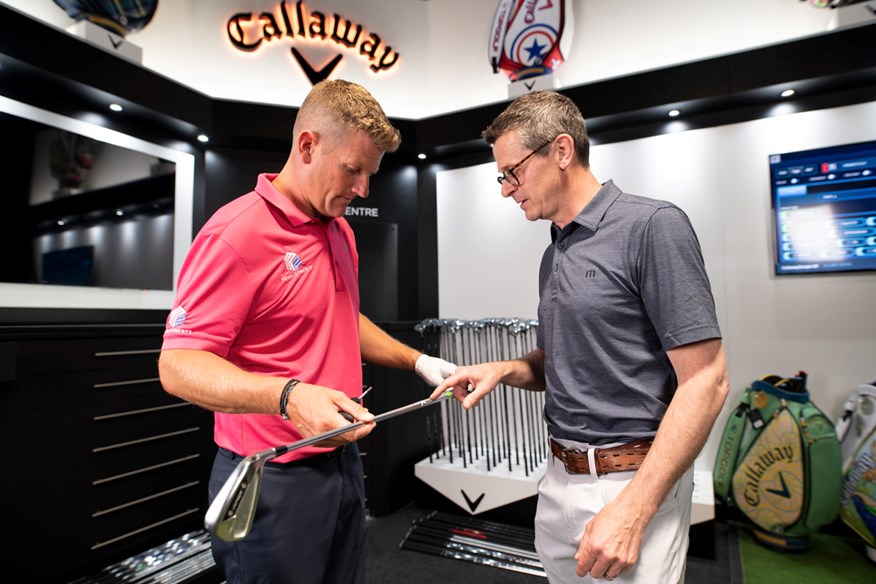
Where can I hit all the best iron shafts from each brand?
Any good independent fitter will offer heads and shafts agnostically making it possible to fit almost any shaft to any head. Rather than being governed by the limited selection of shafts contained within a brand’s fitting cart. These are the places to try multiple shaft models from any brand as typically they stock full product families from each manufacturer.
You will need to search these places out, as in the UK especially there aren’t huge amounts of them. Very often they will charge for a fitting session whether you buy from them or not as their expertise and knowledge have taken years to build and cannot be given away for free.
Why is there no standard for a regular or stiff flex shaft in golf?
On the surface, it seems like a crazy idea that a stiff flex from KBS will always be different to a stiff flex from True Temper or Nippon. Making it nigh on impossible for golfers to know which shaft is right for them and get the correct flex to suit their game without the assistance of a launch monitor or experienced custom fitter or both. But dig a little deeper and it all starts to make sense.
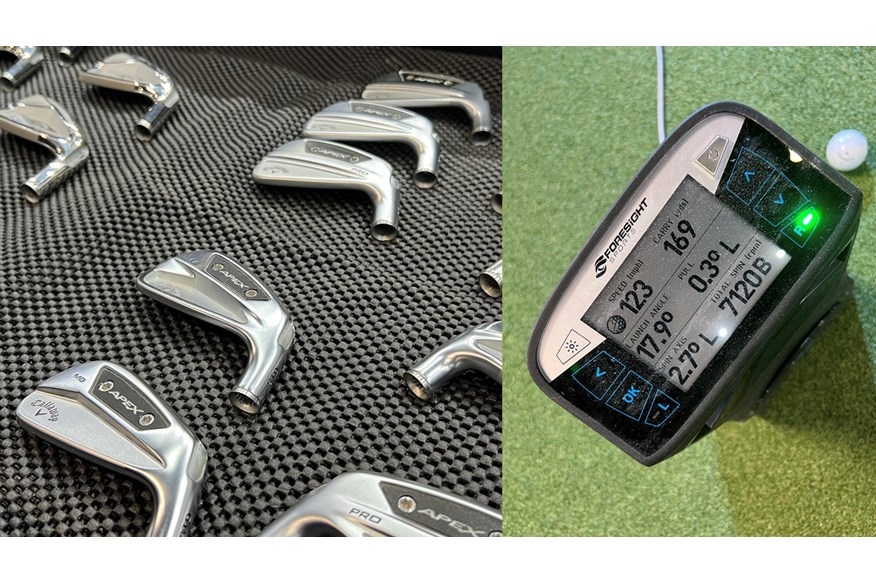
Stiff flex shafts from the same company don’t even come at the same flex as brands design models for their specific target golfer. So, where a strong but slower-speed golfer will likely need a softer, lower kick point stiff flex to help get shots airborne, a high-speed player is likely to need a much more robust stiff flex to control launch, spin, and accuracy. So, if you don’t know the difference between a Dynamic Gold and a KBS Max I’d seriously urge you to seek out a fitter who does.
What is the difference between stock and aftermarket shafts?
Designers and engineers always have a target golfer in mind no matter what iron they are designing. Through research and development, they’ll know the exact launch and spin characteristics of each design and the traits of their target player. A ‘stock’ shaft is chosen to position a model to hit the largest group of golfers in the chosen market, safe in the knowledge that golfers outside this area can be fitted into another of the brand’s iron shaft options.
In the iron arena stock shafts spell out who an iron model is designed for, as it’s the model the head brand believes will best suit the vast majority of golfers within their target market. Stock shafts allow companies to plan and organize production effectively as a huge percentage of sales can be placed within a single basket. Where custom orders of ‘aftermarket’ shafts later require the right stock, add extra build time, and require expertise, all of which incur costs.
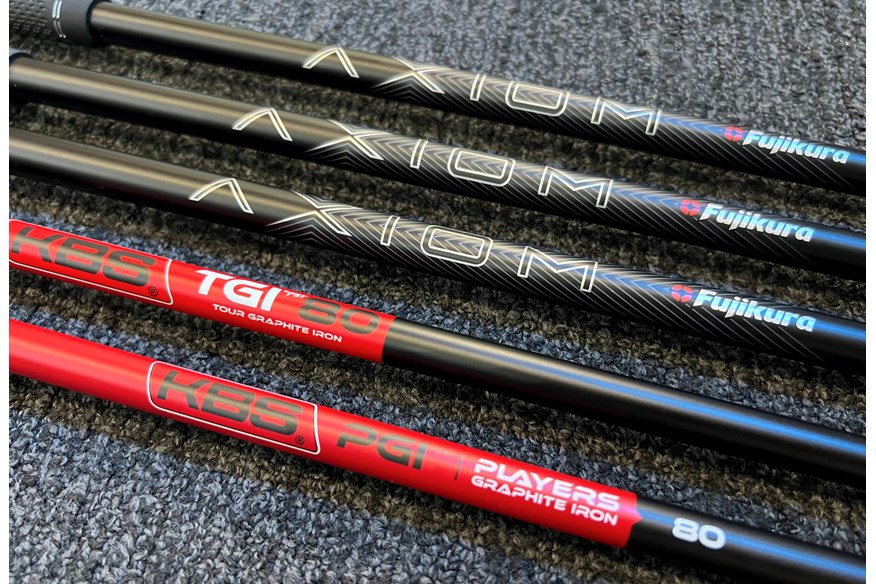
Almost all irons are designed to hit a target price as club brands are very aware lots of golfers won’t entertain spending more than £1200 on a set of irons. If this level is exceeded sales drop off dramatically, so very often stock shafts are chosen to offer a blend of performance for their target player and be a good value-for-money option.
‘Aftermarket’ shafts tend to be designed with less attention paid to how much they cost, as they’re not trying to be a ‘stock’ option that guarantees vast swathes of sales. ‘Aftermarket’ shafts can blend different materials (steel and graphite perhaps like the AeroTech Steelfiber), target various players in different niches (so sales volumes will be lower), or simply be designed without the constraint of costs, so are often a more premium or preferable option if you’re out to buy your ultimate iron set-up.
What about Ping shafts? Don’t they make their own?
Like Apple, Ping prefers to offer a seamless end-to-end club service that utilizes components they have complete control over producing. The company spends a huge amount of time studying the golf swings of thousands of players and develops shafts to reflect their findings.
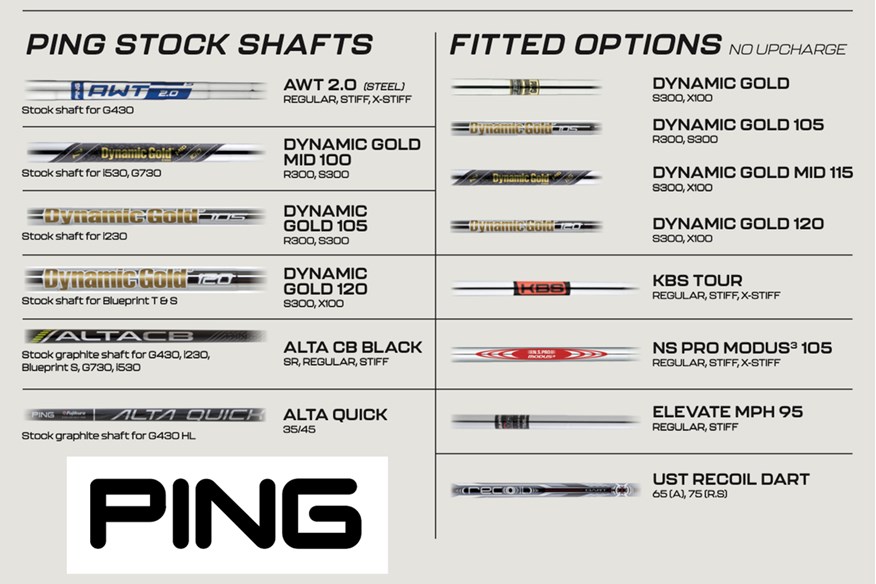
Ping’s own brand label shafts are produced by a third party. The company’s mass-market AWT 2.0 iron is made by Nippon, as they believe Nippon produces the most consistent and accurate shafts available. Nippon is also happy making a specific ‘pattern’ for them.
Ping offers a full range of other shafts from the best manufacturers to ensure every golfer gets fitted into their perfect set-up.
What do I need to know about taper and parallel tip shafts?
As a consumer hopefully not too much, but it’s an issue club and shaft brands work with on a daily basis. Iron shafts come with either a parallel tip, where the shaft walls run parallel to each other, or a taper tip where the shaft tapers from wider below the first step to narrower at the very tip of the shaft.
The different constructions require a different hosel shape, which means it’s not possible to put a parallel tip shaft into a taper hosel iron or vice versa. It also means taper iron shafts are predominantly sold in sets of specific lengths so the 9-iron shaft has to go into a 9-iron head and an 8 into an 8-iron head to ensure a consistent flex and feel. Whereas parallel tip iron shafts typically come in a single longer length and are trimmed from the tip creating the flex required.
Unless you’re buying the shafts direct this hopefully isn’t something you need to worry about. The club brand or fitter you’re buying through will handle everything for you. Just be aware some iron shafts are only available as parallel or taper tip options, not both. So, you may come across a situation where it’s not possible to fit the exact shaft you need into the iron heads you want them in.

What do ascending-weight shafts do?
Ascending Mass Technology shafts are a pretty modern idea, for the True Temper AMT family each shaft through the set gets progressively 3g lighter. So, where the True Temper AMT Tour White has a pitching wedge shaft weighing 130g the 7-iron will be 124g and the 4-iron 115g.
Essentially the idea is that golfers get more precision in the short irons but also the benefit of lighter long irons to help with speed, launch, and spin. So long as you like the feel and can ‘time’ the lighter and longer clubs the idea has some merit.
Does more torque help some golfers square the face at impact?
Absolutely yes. You don’t need too keen an eye to spot how most shafts aimed at more average swing-speed players usually come with slightly higher torque ratings than those targeting higher-speed players.
The reason is extra torque (the amount a shaft wants to twist/rotate as it comes into impact) can help more average-speed players square the face at impact as the head naturally wants to rotate the shaft, ultimately squaring up or closing the face at impact. At higher speeds lower torque shafts rotate less so there’s less squaring up or closing of the face.
What does Callaway Flight Code do?
Like with most things in golf, there’s no standard when it comes to shafts, so one shaft brand’s regular flex is highly like to match another’s stiff. Likewise, when it comes to launch one company’s low launch shaft will be virtually the same as another’s mid, so head brands like Callaway conduct their own testing to understand how all the shafts they buy from various suppliers compare.
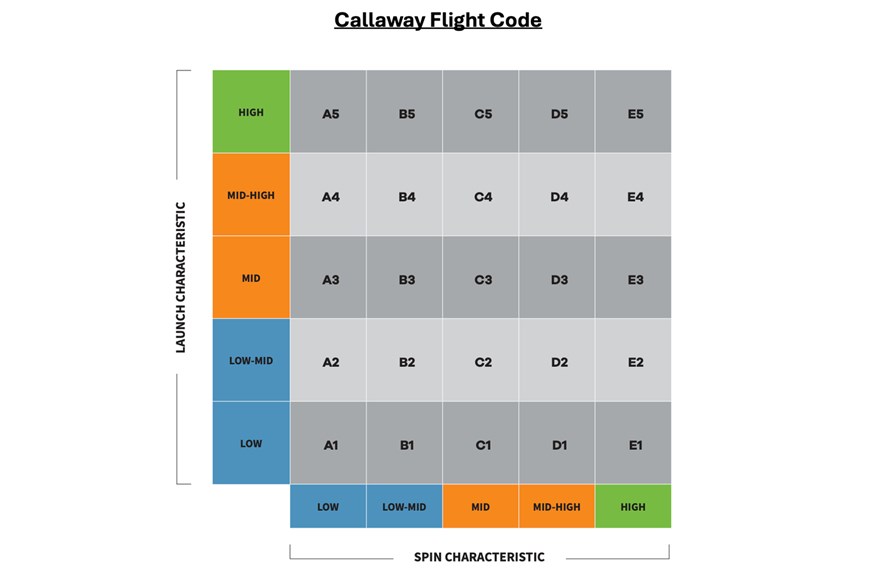
This bit of important research allows brands to optimize the performance of their irons for their intended audience. They’ll select heavy, low-launch models for their best player irons, where game improver options are complemented by lighter, higher launch/spin offerings. This comparison information is super useful to club fitters as they can see which models are most similar (so two shafts that have a Callaway Flight Code of A1 bring similar traits to the table) to help narrow choices for the golfer being fitted and avoid fitting fatigue. It’s also useful info for golfers to help them understand which shafts might potentially suit their game before even attending a fitting session.
The Callaway Flight Code is the fruit born by their shaft research. It’s a simple chart that allows you to see how different shaft models compare and quickly identify models that might aid your game.
-
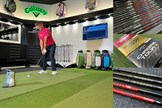 Neil Wain testing the best iron shafts at the Callaway European HQ in Chessington, UK.
Neil Wain testing the best iron shafts at the Callaway European HQ in Chessington, UK.
-
 Neil Wain testing the best iron shafts.
Neil Wain testing the best iron shafts.
-
 Neil Wain testing the best iron shafts.
Neil Wain testing the best iron shafts.
-
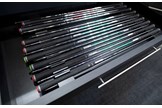 The lightweight Nippon NS Pro GEO shafts used in this test.
The lightweight Nippon NS Pro GEO shafts used in this test.
-
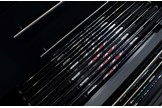 A close up of the lightweight True Temper AMT Red shafts used in this test.
A close up of the lightweight True Temper AMT Red shafts used in this test.
-
 Neil Wain hitting an Ascending Mass True Temper AMT black iron shaft.
Neil Wain hitting an Ascending Mass True Temper AMT black iron shaft.
-
 Golf irons don't change that much from one year to the next
Golf irons don't change that much from one year to the next
-
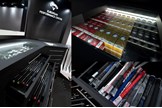 Inside the Callaway European Performance Centre.
Inside the Callaway European Performance Centre.
-
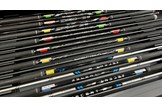 The graphite iron shafts used within this test.
The graphite iron shafts used within this test.
-
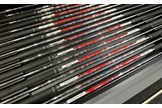 The heavyweight Nippon NS Pro Modus iron shafts used in this test
The heavyweight Nippon NS Pro Modus iron shafts used in this test
-
 The European Callaway HQ and Performance Centre where we tested the best iron shafts.
The European Callaway HQ and Performance Centre where we tested the best iron shafts.
-
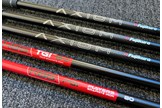 The after-market Fujikura Axiom and KBS graphite shafts used in this test.
The after-market Fujikura Axiom and KBS graphite shafts used in this test.
-
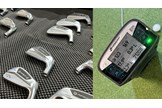 The Callaway Apex 24 CB iron and Foresight QC Quad launch monitor used in this test.
The Callaway Apex 24 CB iron and Foresight QC Quad launch monitor used in this test.
-
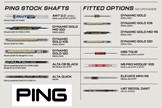
-
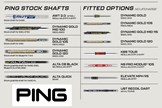 The stock and after market shaft choices when buying Ping irons.
The stock and after market shaft choices when buying Ping irons.
-
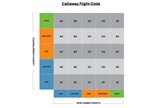 A Callaway Flight Code chart
A Callaway Flight Code chart
-
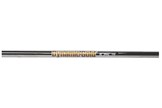 A close up of the Dynamic Gold 105 iron shaft band
A close up of the Dynamic Gold 105 iron shaft band
-
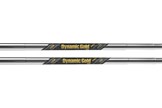 A close up of the Dynamic Gold Mid 100 and 115 iron shaft bands
A close up of the Dynamic Gold Mid 100 and 115 iron shaft bands
-
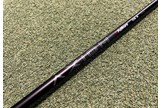 A close up of the Fujikura Axiom 105 iron shaft used in this test
A close up of the Fujikura Axiom 105 iron shaft used in this test
-
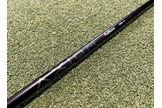 A close up of the Fujikura Axiom 125 iron shaft used in this test
A close up of the Fujikura Axiom 125 iron shaft used in this test
-
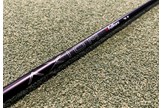 A close up of the Fujikura Axiom 75 iron shaft used in this test
A close up of the Fujikura Axiom 75 iron shaft used in this test
-
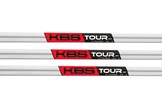 A close up of the KBS C-Taper Iron shaft band
A close up of the KBS C-Taper Iron shaft band
-
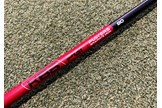 A close up of the KBS PGI iron shaft used in this test
A close up of the KBS PGI iron shaft used in this test
-
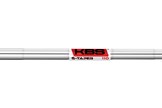 A close up of the KBS S-Taper Iron shaft band
A close up of the KBS S-Taper Iron shaft band
-
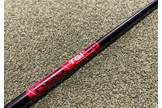 A close up of the KBS TGI iron shaft used in this test
A close up of the KBS TGI iron shaft used in this test
-
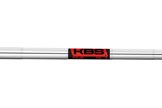 A close up of the KBS Tour Iron shaft band
A close up of the KBS Tour Iron shaft band
-
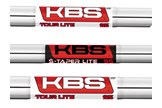 A close up of the KBS Tour, S-Taper and C-Taper iron shaft bands
A close up of the KBS Tour, S-Taper and C-Taper iron shaft bands
-
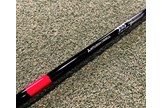 A close up of the Mitsubishi MMT iron shaft used in this test
A close up of the Mitsubishi MMT iron shaft used in this test
-
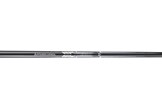 A close up of the graphics on the Mitsubishi MMT iron shaft
A close up of the graphics on the Mitsubishi MMT iron shaft
-
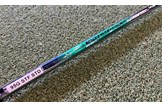 A close up of the Nippon NS Pro 950 Neo iron shaft used in this test
A close up of the Nippon NS Pro 950 Neo iron shaft used in this test
-
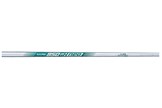 A close up of the Nippon NS Pro Modus 950 Neo iron shaft band
A close up of the Nippon NS Pro Modus 950 Neo iron shaft band
-
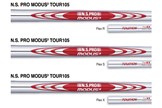 A close up of the Nippon NS Pro Modus Tour 105 iron shaft graphics
A close up of the Nippon NS Pro Modus Tour 105 iron shaft graphics
-
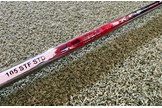 A close up of the Nippon NS Pro Modus Tour 105 iron shaft used in this test
A close up of the Nippon NS Pro Modus Tour 105 iron shaft used in this test
-
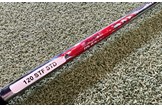 A close up of the Nippon NS Pro Modus Tour 120 shaft used in this test
A close up of the Nippon NS Pro Modus Tour 120 shaft used in this test
-
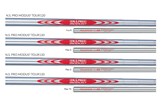 A close up of the Nippon NS Pro Tour 120 iron shaft graphics
A close up of the Nippon NS Pro Tour 120 iron shaft graphics
-
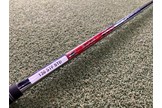 A close up of the Nippon NS Pro Modus Tour 130 shaft used in this test
A close up of the Nippon NS Pro Modus Tour 130 shaft used in this test
-
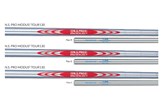 A close up of the Nippon NS Pro Modus Tour 130 Iron shaft graphics
A close up of the Nippon NS Pro Modus Tour 130 Iron shaft graphics
-
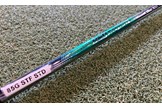 A close up of the Nippon NS Pro Neo 85 iron shaft used in this test
A close up of the Nippon NS Pro Neo 85 iron shaft used in this test
-
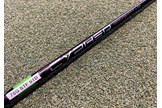 A close up of the Project X Cypher 70 iron shaft used in this test
A close up of the Project X Cypher 70 iron shaft used in this test
-
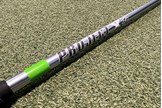 A close up of the Project X IO shaft used in this test
A close up of the Project X IO shaft used in this test
-
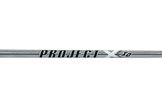 A close up of the Project X IO iron shaft band
A close up of the Project X IO iron shaft band
-
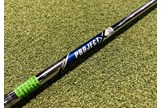 A close up of the Project X iron shaft used in this test
A close up of the Project X iron shaft used in this test
-
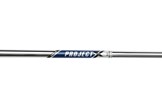 A close up of the Project X iron shaft band
A close up of the Project X iron shaft band
-
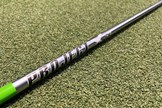 A close up of the Project X LS iron shaft used in this test
A close up of the Project X LS iron shaft used in this test
-
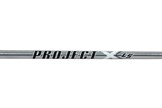 A close up of the Project X LS iron shaft band
A close up of the Project X LS iron shaft band
-
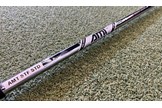 A close up of the True Temper AMT Black iron shaft used in this test
A close up of the True Temper AMT Black iron shaft used in this test
-
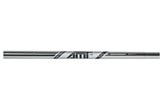 A close up of the True Temper AMT Black iron shaft band
A close up of the True Temper AMT Black iron shaft band
-
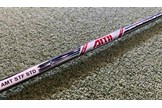 A close up of the True Temper AMT Red iron shaft used in this test
A close up of the True Temper AMT Red iron shaft used in this test
-
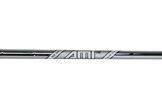 A close up of the True Temper AMT Tour White shaft band
A close up of the True Temper AMT Tour White shaft band
-
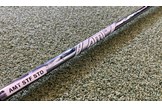 A close up of the True Temper AMT White shaft used in this test
A close up of the True Temper AMT White shaft used in this test
-
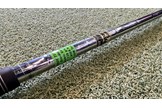 A close up of the Dynamic Gold iron shaft used in this test
A close up of the Dynamic Gold iron shaft used in this test
-
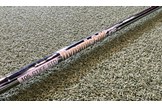 A close up of the True Temper Dynamic Gold iron shaft used in this test
A close up of the True Temper Dynamic Gold iron shaft used in this test
-
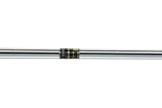 A close up of the True Temper Dynamic Gold shaft band
A close up of the True Temper Dynamic Gold shaft band
-
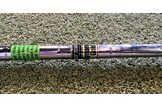 A close up of the True Temper Dynamic Gold shaft used in this test
A close up of the True Temper Dynamic Gold shaft used in this test
-
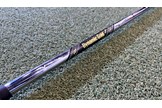 A close up of the True Temper Dynamic Gold Mid 100 iron shaft used in this test
A close up of the True Temper Dynamic Gold Mid 100 iron shaft used in this test
-
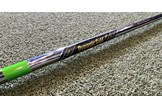 A close up of the True Temper Dynamic Gold Mid 115 iron shaft used in this test
A close up of the True Temper Dynamic Gold Mid 115 iron shaft used in this test
-
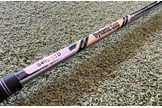 A close up of the True Temper Dynamic Gold Tour Issue S400 shaft used in this test
A close up of the True Temper Dynamic Gold Tour Issue S400 shaft used in this test
-
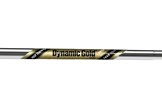 A close up of the True Temper Dynamic Gold Tour Issue 120 iron shaft
A close up of the True Temper Dynamic Gold Tour Issue 120 iron shaft
-
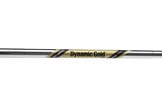 A close up of the True Temper Dynamic Gold Tour Issue shaft band
A close up of the True Temper Dynamic Gold Tour Issue shaft band
-
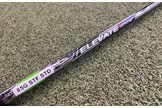 A close up of the True Temper Elevate MPH 85 iron shaft used in this test
A close up of the True Temper Elevate MPH 85 iron shaft used in this test
-
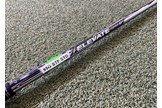 A close up of the True Temper Elevate MPH 95 iron shaft used in this test
A close up of the True Temper Elevate MPH 95 iron shaft used in this test
-
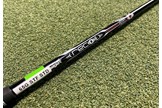 A close up of the UST Recoil Dart 65 iron shaft used in this test
A close up of the UST Recoil Dart 65 iron shaft used in this test
-
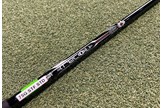 A close up of the UST Recoil Dart 75 iron shaft used in this test
A close up of the UST Recoil Dart 75 iron shaft used in this test
